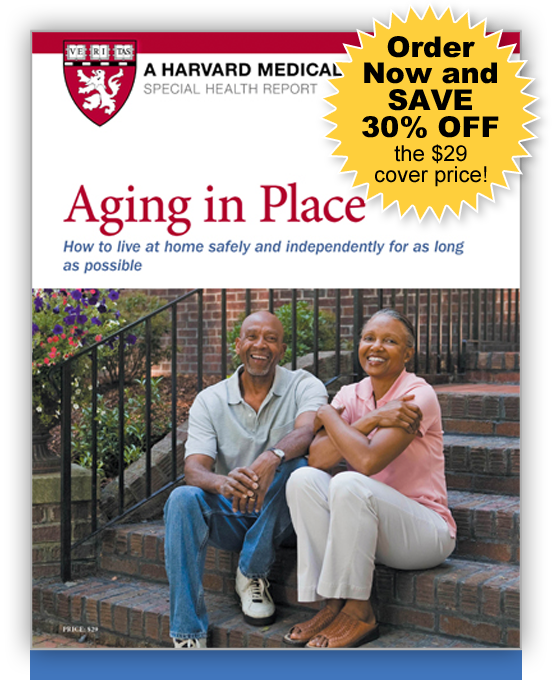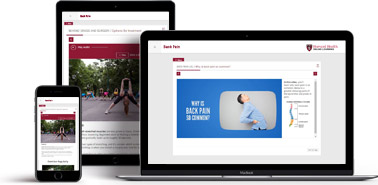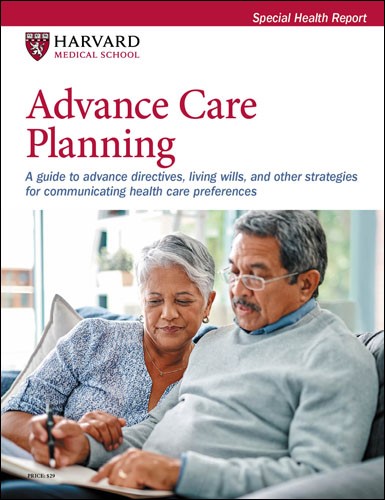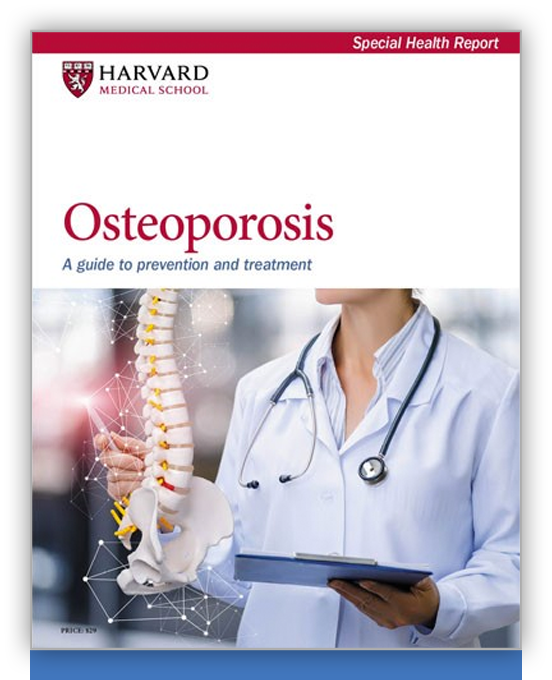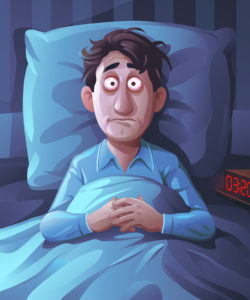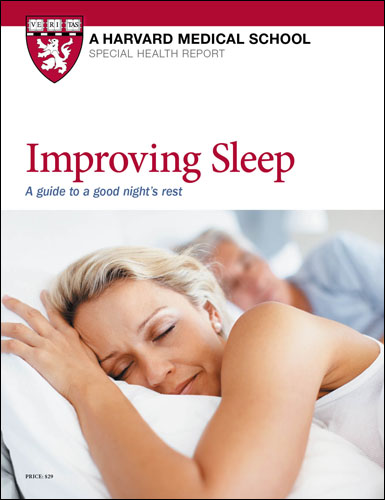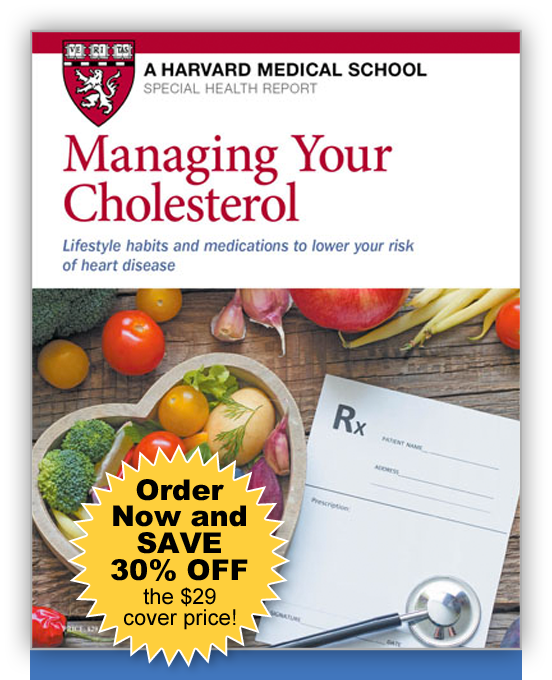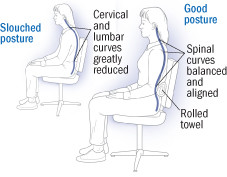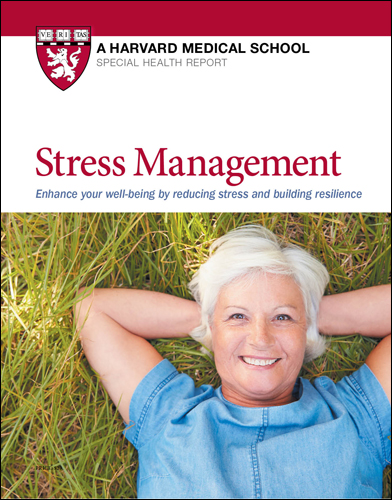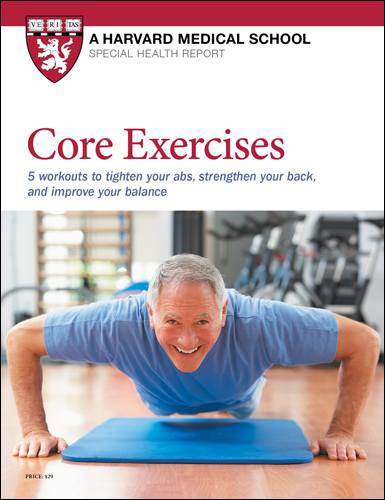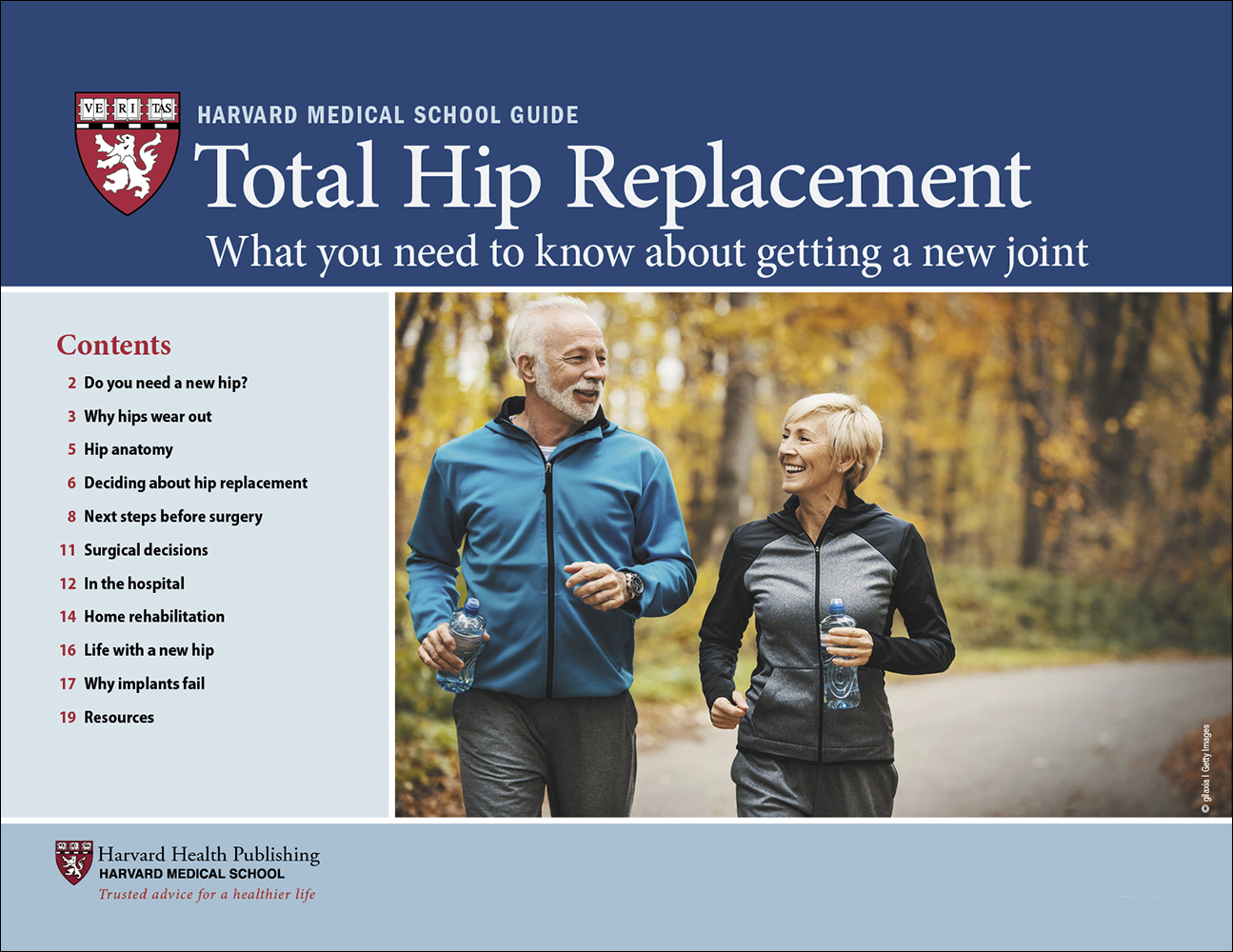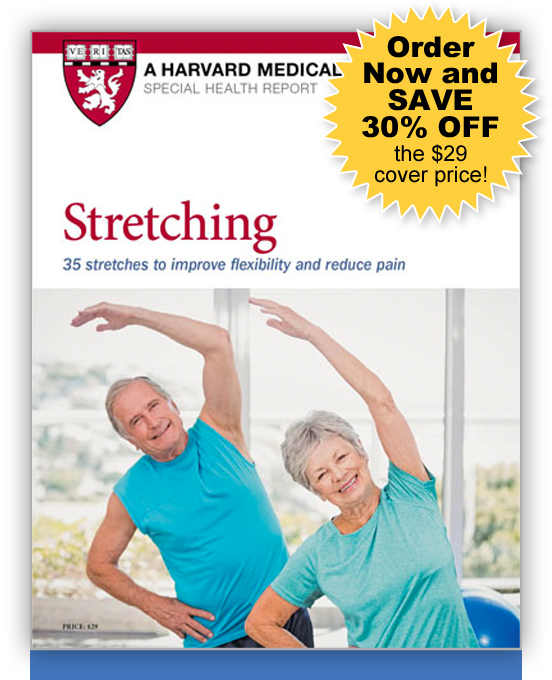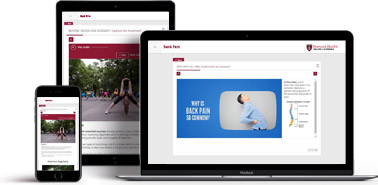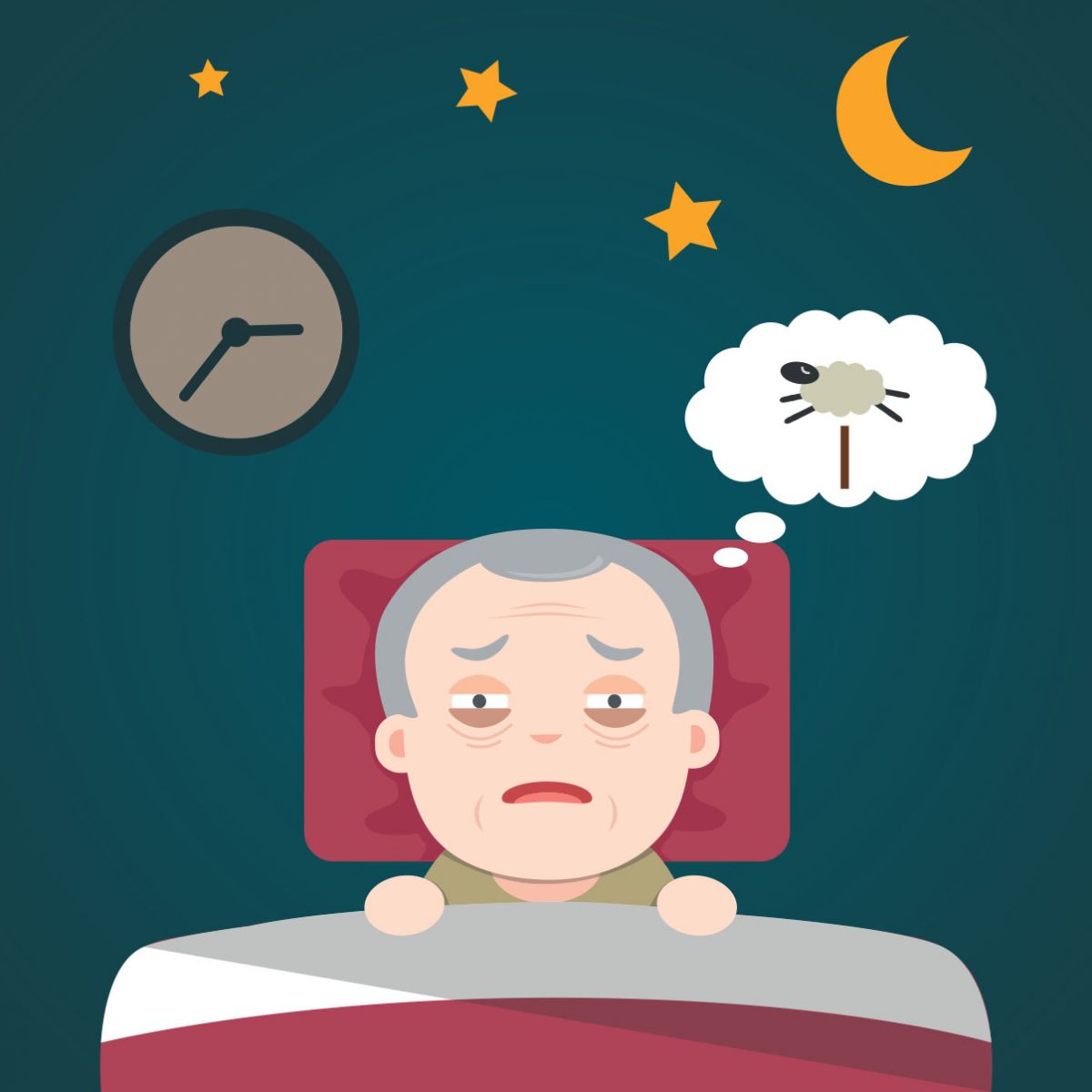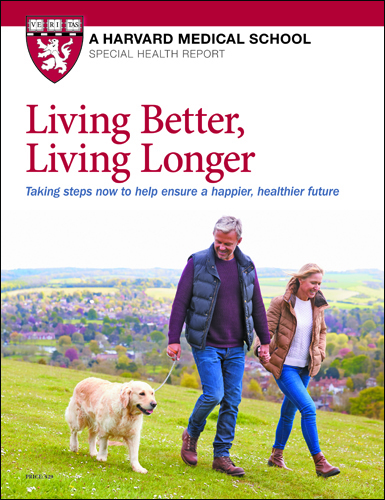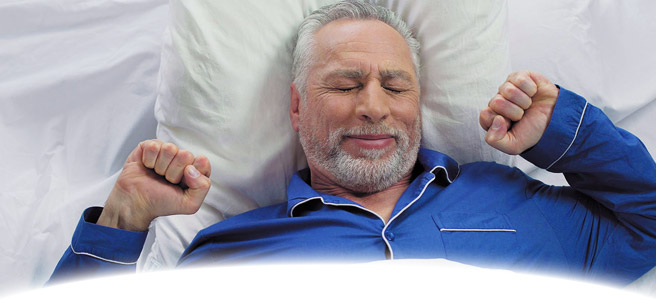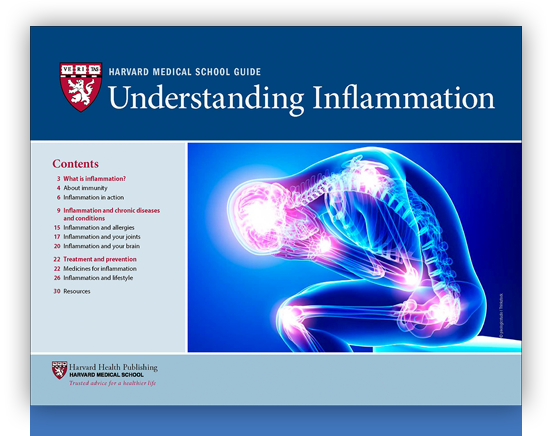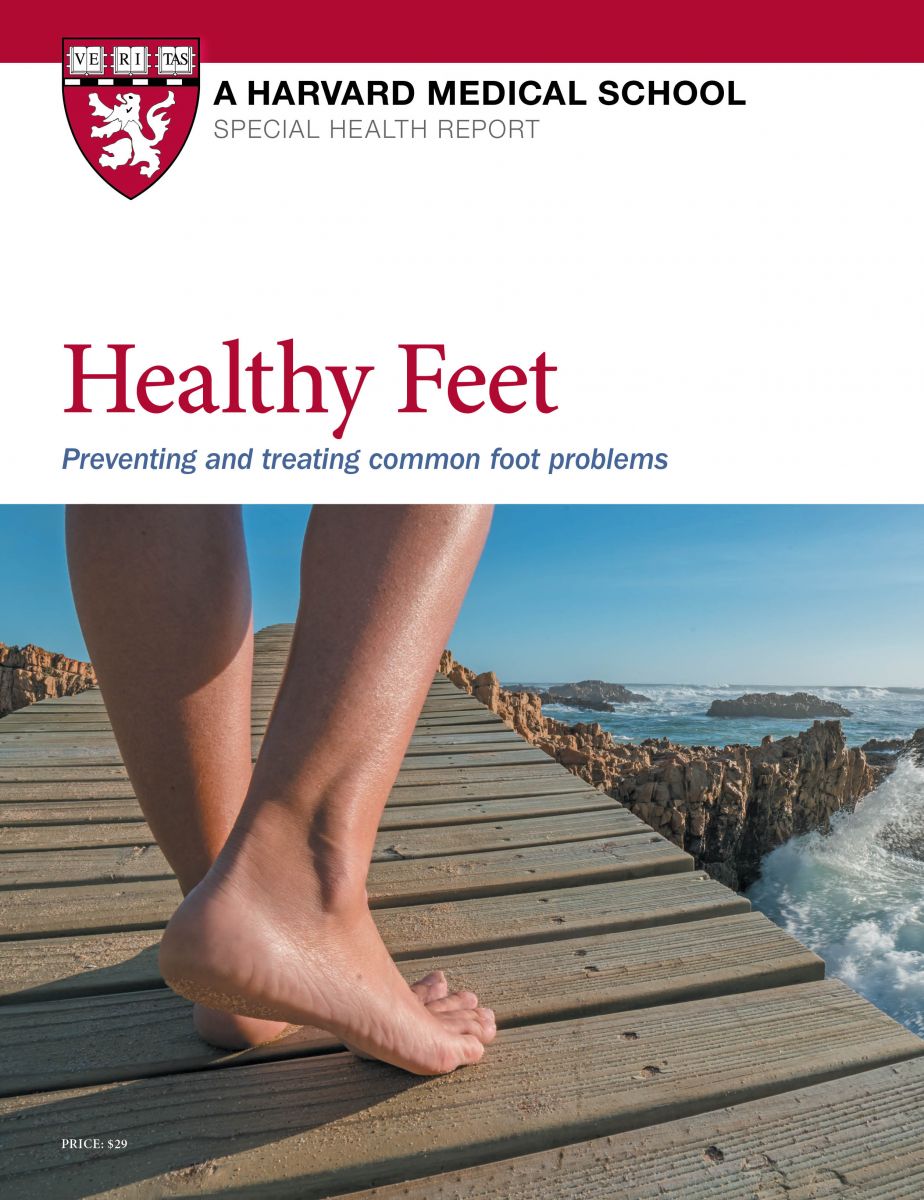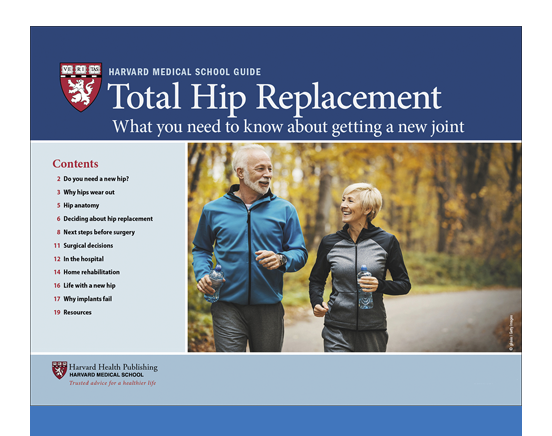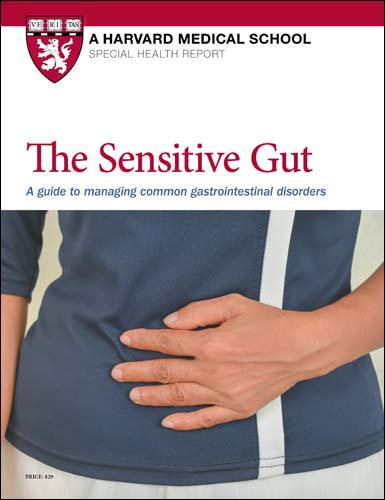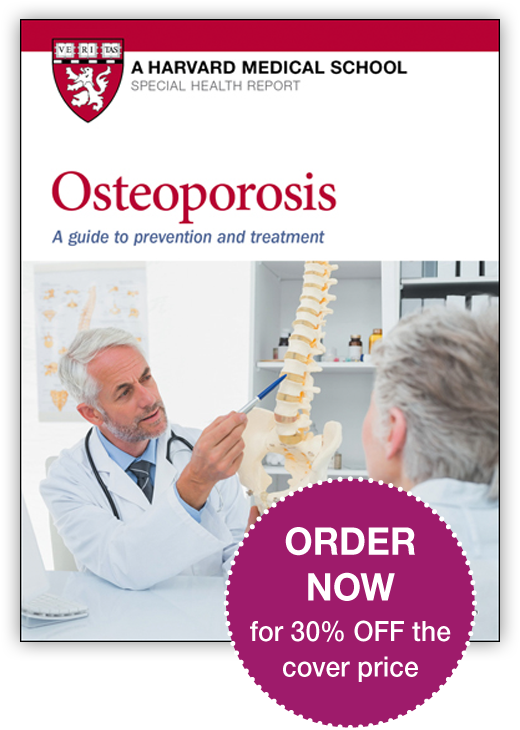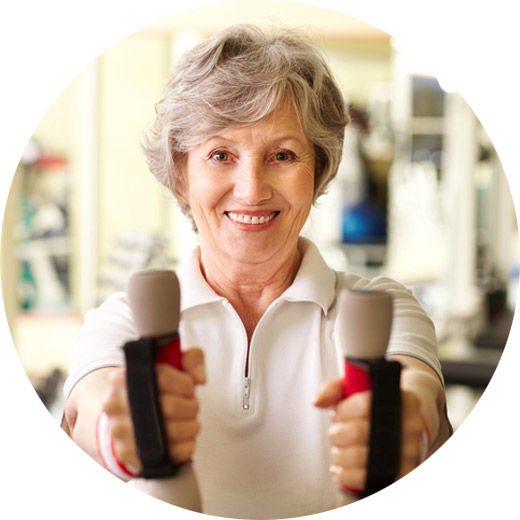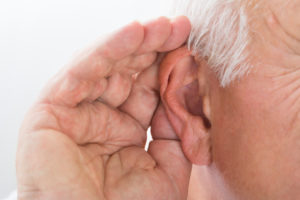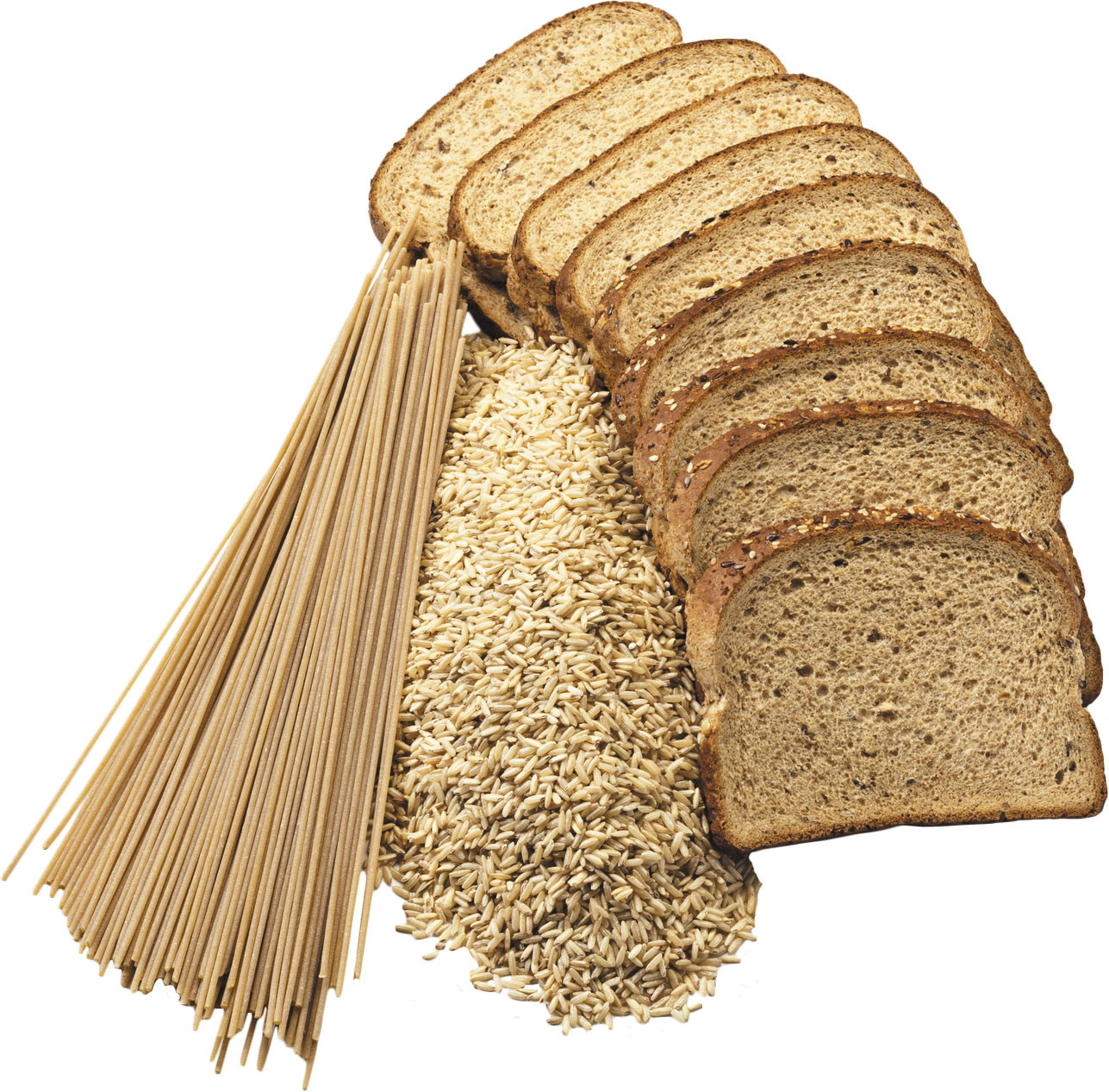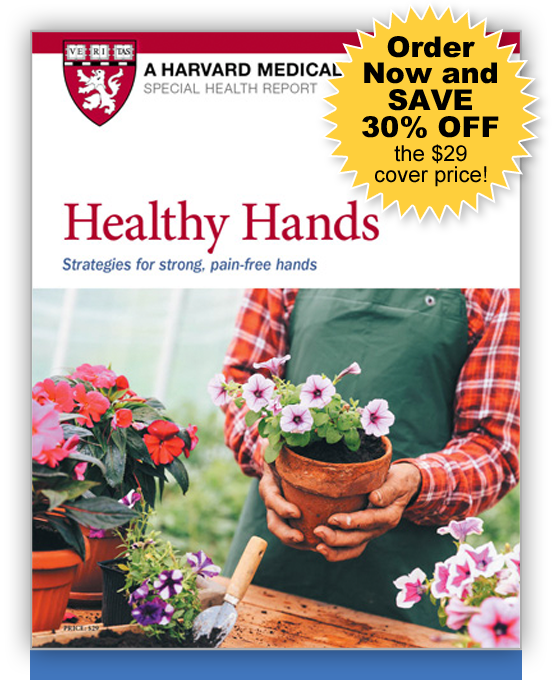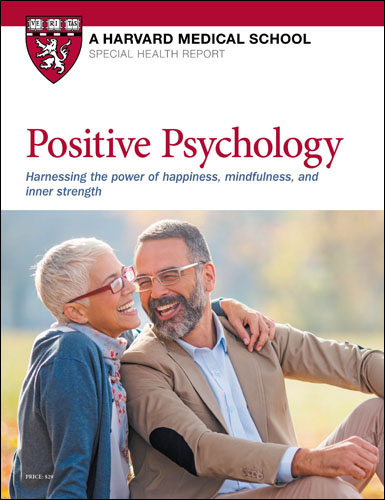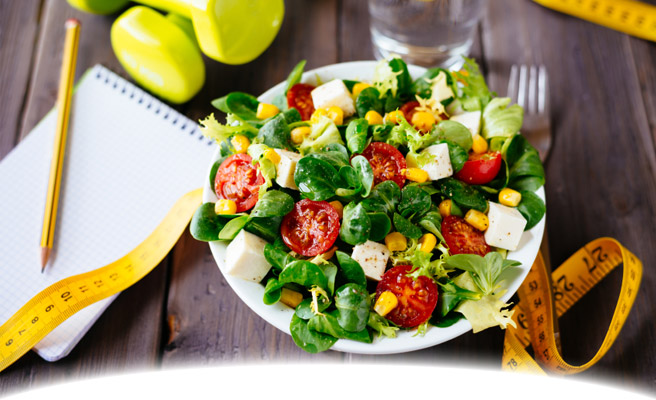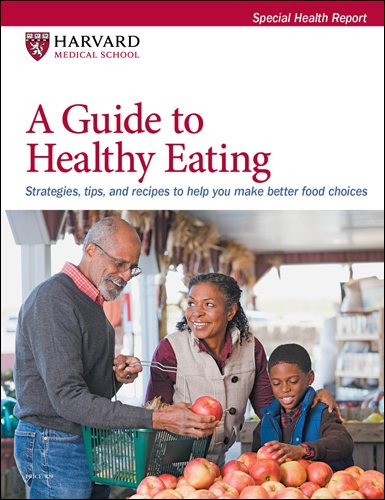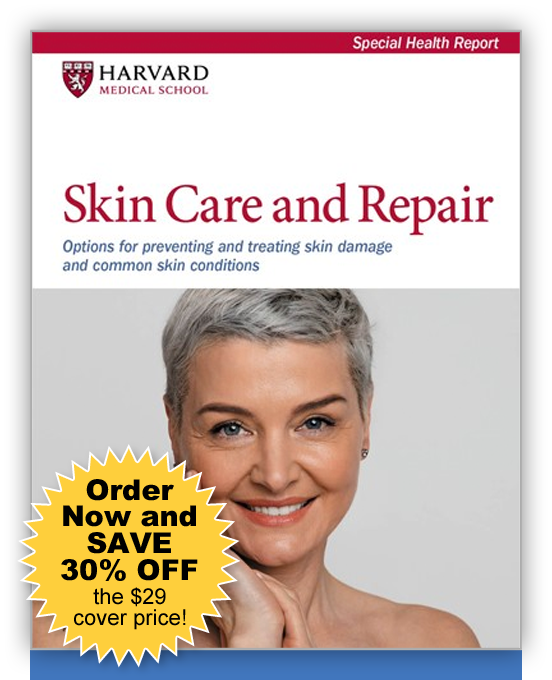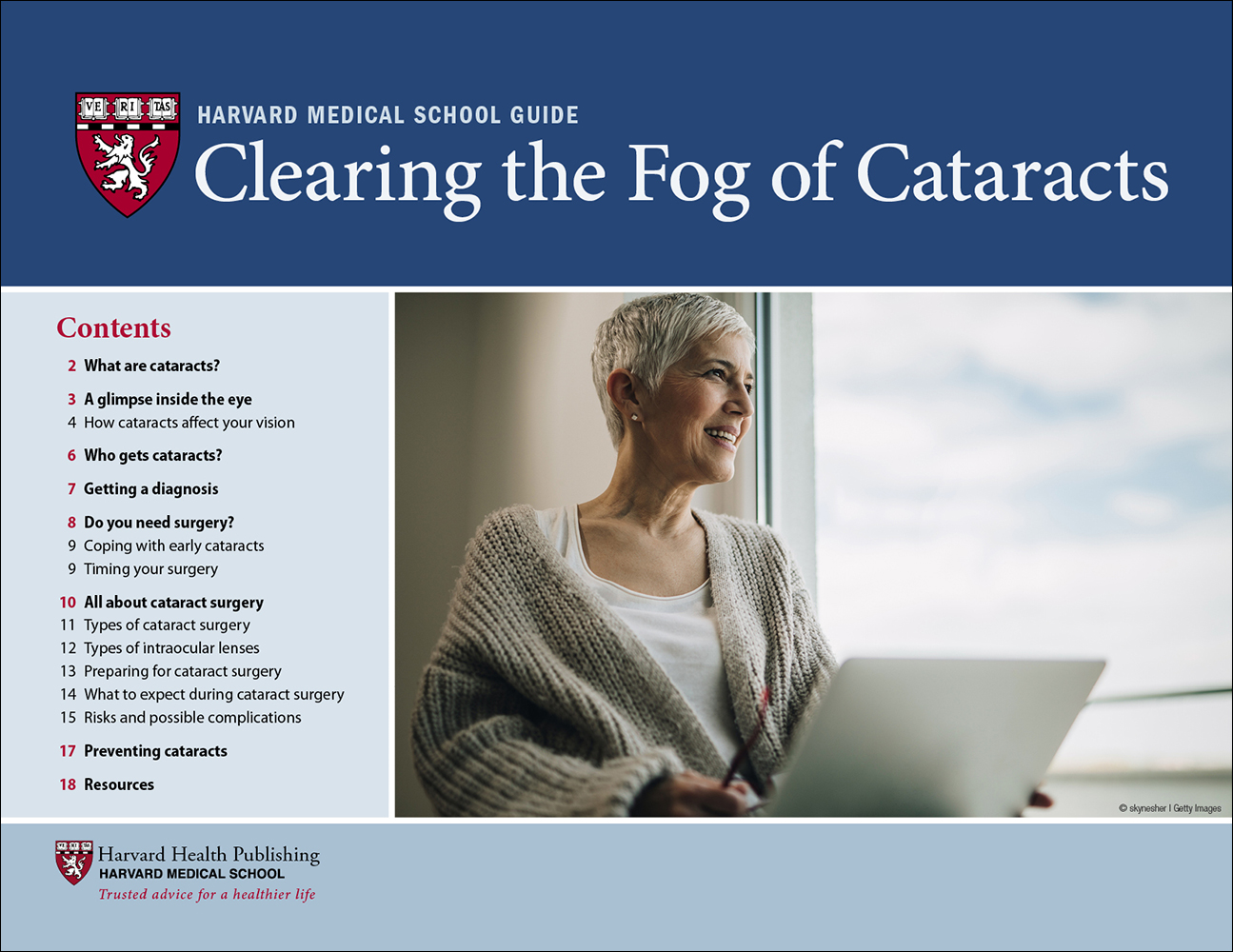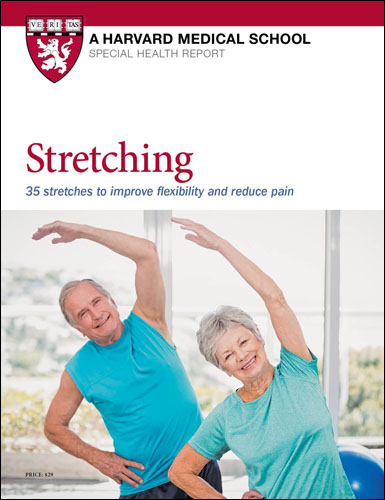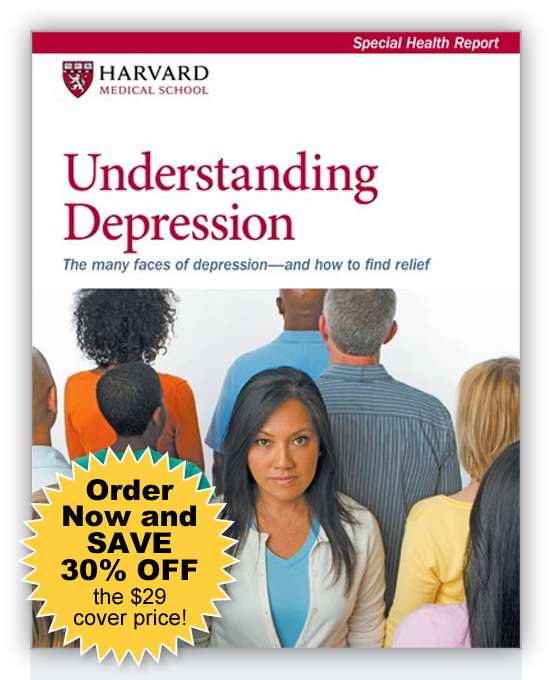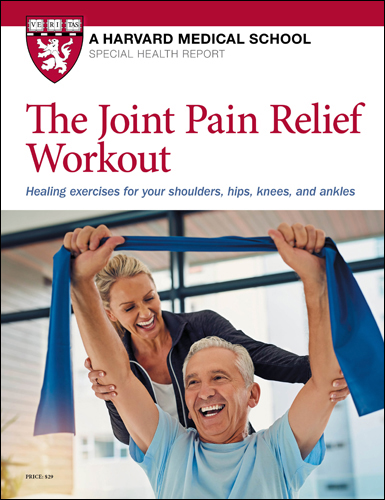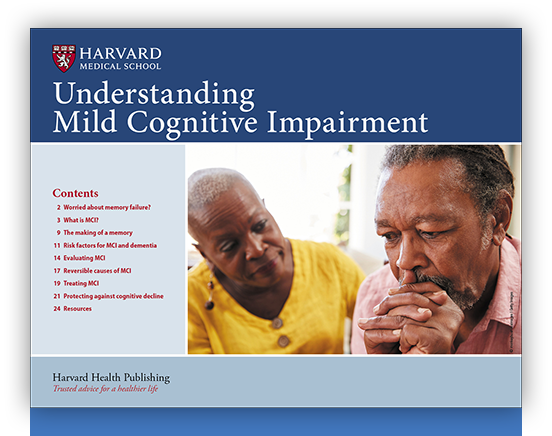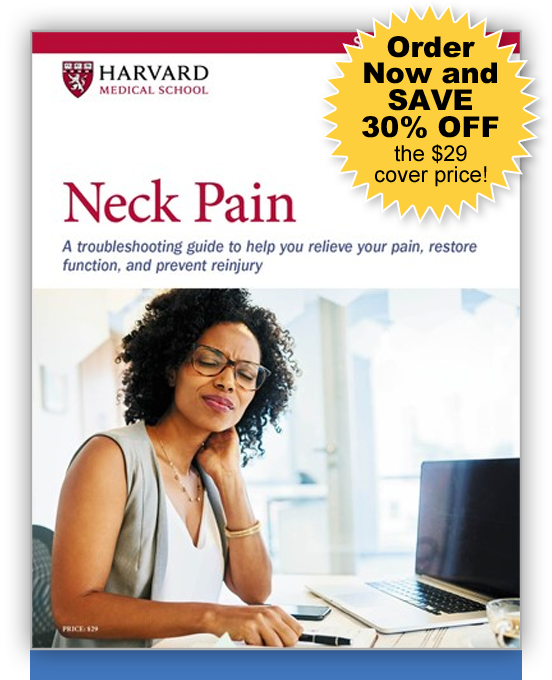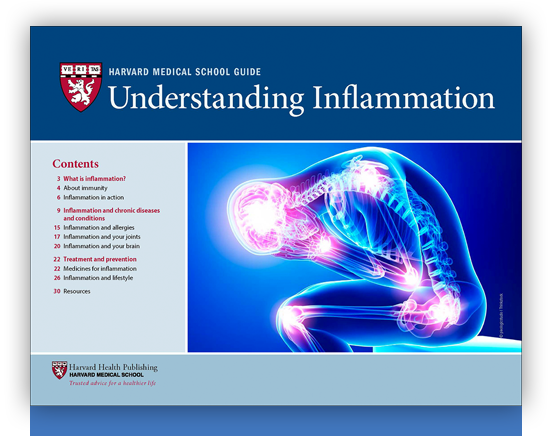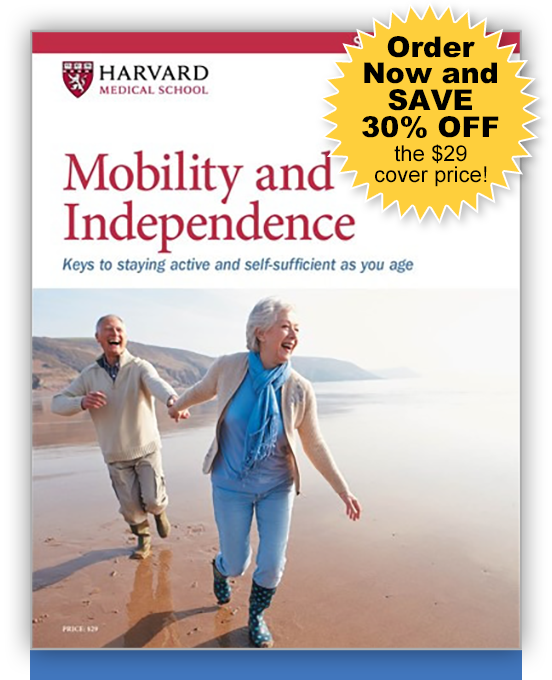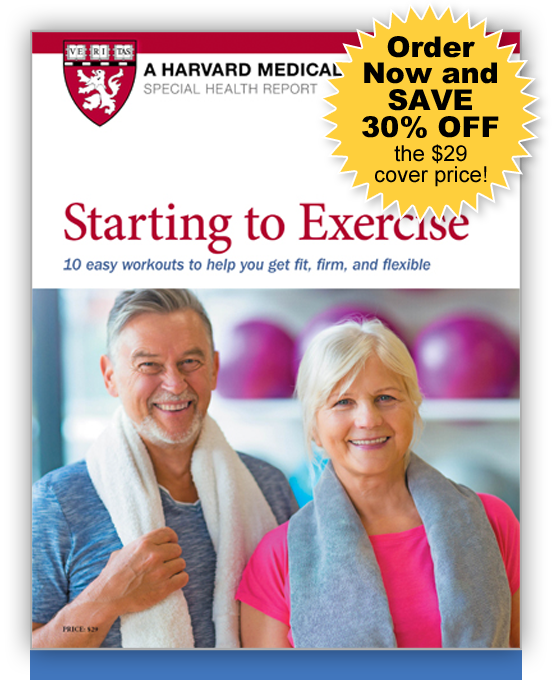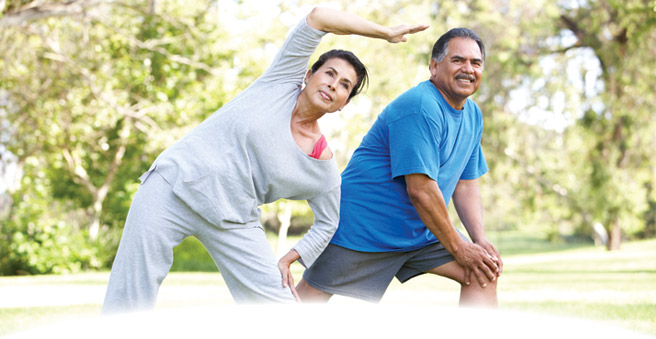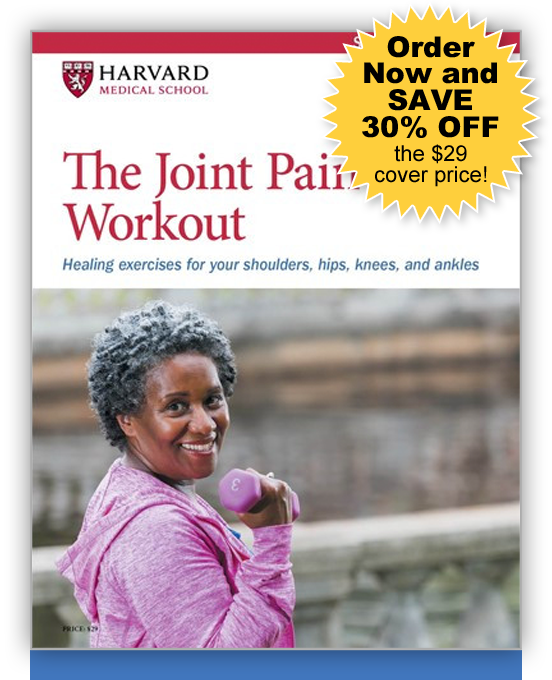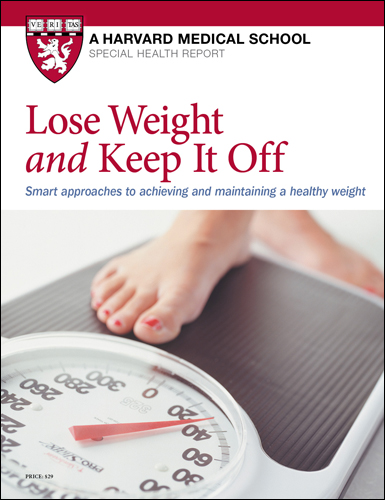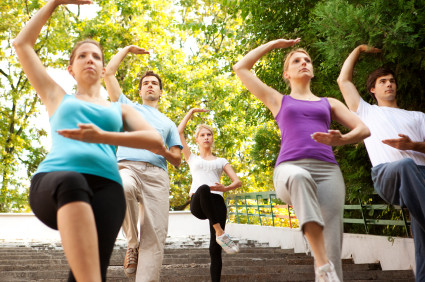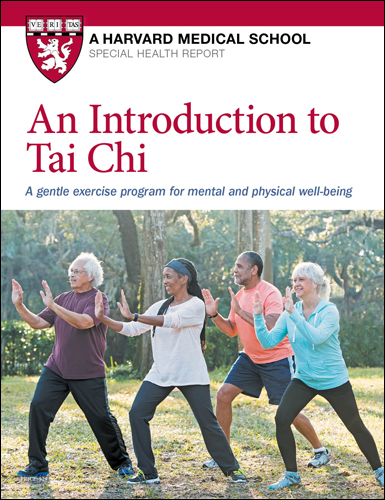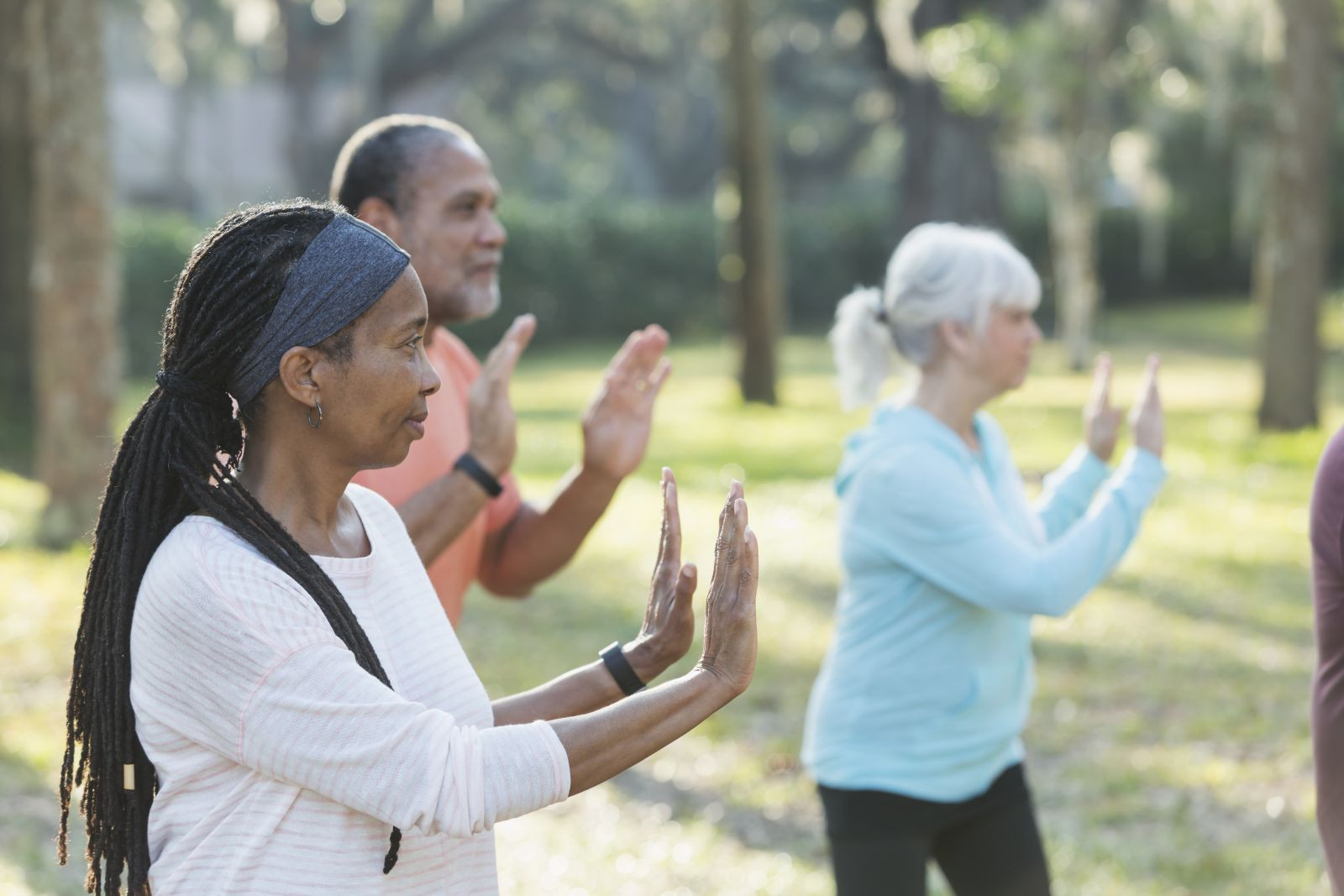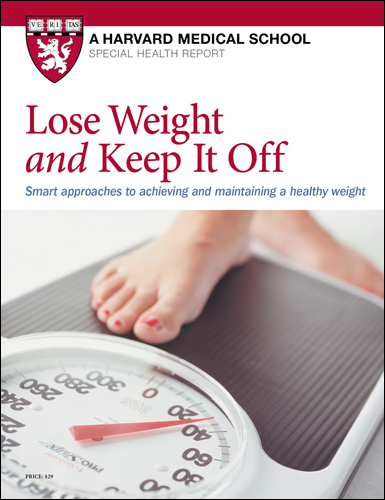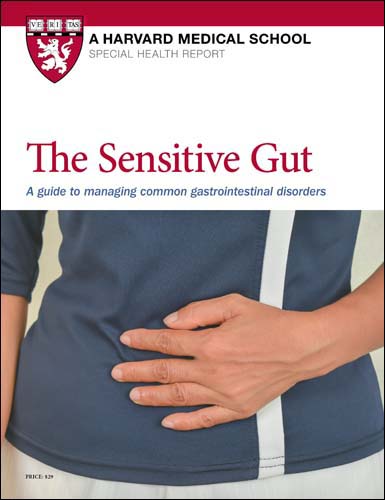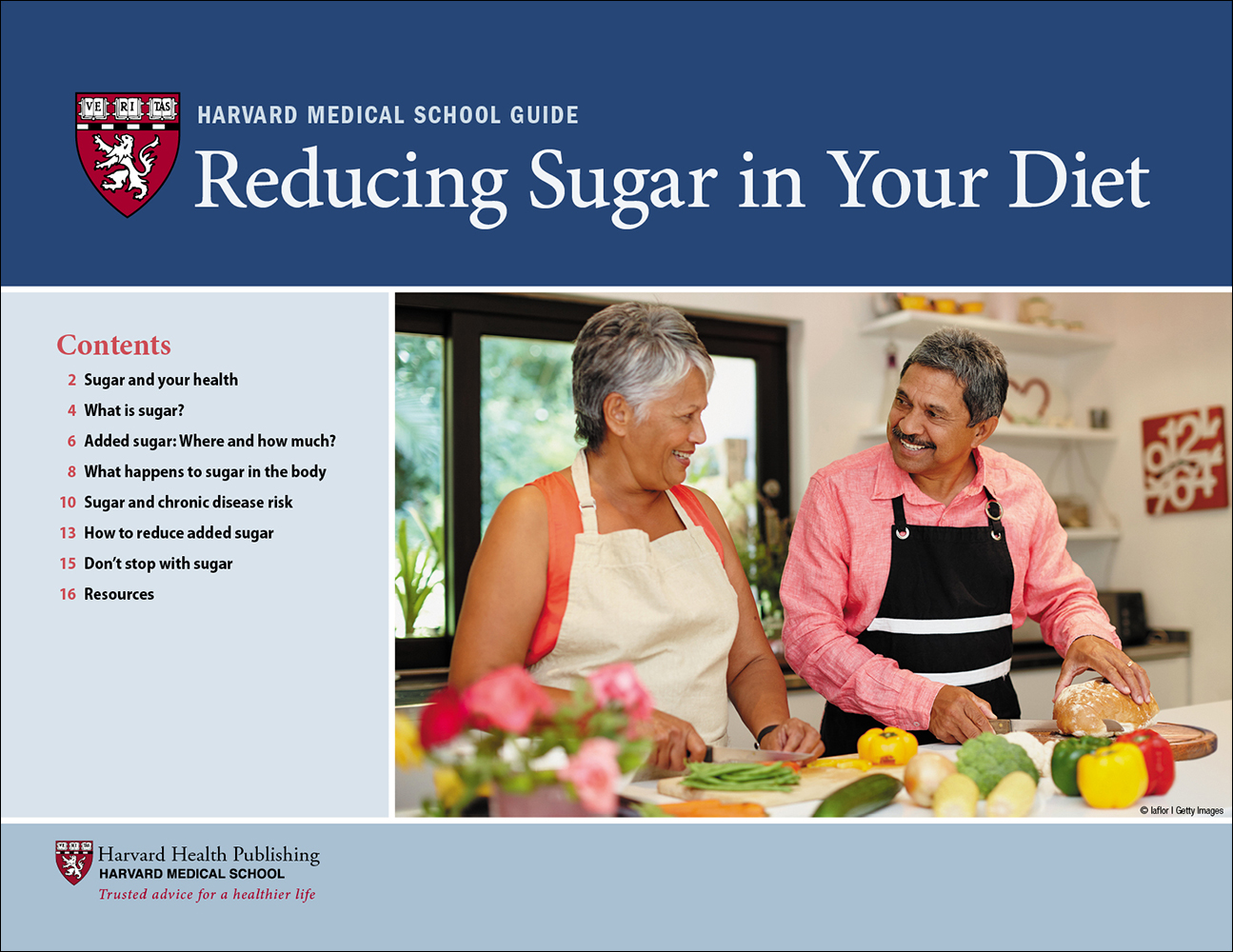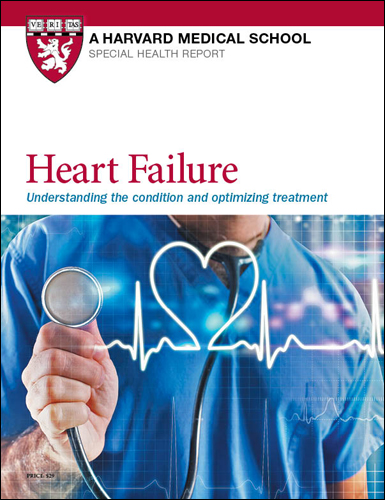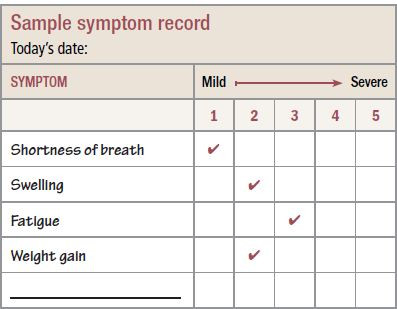
It is our goal to share Connection - Holistic Lifestyle - Alternative Healing Treatments - Living Happier with New Thought - from original sources.
GlobalCnet is a collection of original thought, clical trials and found expert advise. We assembled most everything here, all in one place, to add variety and inspiration to YOU for your education, skills and desires. When you click on a link observe all the other articles and information available to you, copy what you need. GlobalCnet connects you.
The original authors, like Harvard University, MedNet, Unstuck.com, Readers Digest, VIVE Health, WebMD and hundreds of doctors, writers and researcher labs. All of the present materials and web sites have written, published and illustrated information for your benefit and personal growth. GlobalCnet connected you. It is my hope that you use all information for your personal growth goals. Share everything with others. It is all about having the right fast/safe connections
Some of the connections may present the ability to buy a product. GlobalCnet is passing this vital information to you, connecting you, with no profit. The informat is vital to living happier and healthier. If you purchase, and I hope you consider such, you are buying from the direct source. Enjoy...and be healthier.
 
You’ve planned and saved, so now ...Make life’s next chapter all you want it to be!Discover smart strategies for rewarding and fulfilling independent living, with good health, security, and peace-of-mind.
------------------------------------------------------------------------------------------------------- 17 heart-healthy strategies to lower your cholesterol effectively and safely!“Take-charge” techniques that are transforming cholesterol control and giving you renewed protection from a heart attack or stroke
Dear Reader, If you’ve ever fought high, or even elevated, cholesterol, please send for this new report from Harvard Medical School today. It will show you how you can reduce harmful cholesterol — up to 50%—and do it with confidence and success! The report is yours risk-free — and here’s the reason why. Just a 10% drop in LDL cholesterol can mean a 20-30% drop in your risk of a heart attack. We want you to enjoy lower risk when it comes to your heart, so there’s no risk when it comes to this offer! There are more ways than ever to have less! Through specific lifestyle changes and with an emerging roster of drug therapies, you can significantly lower LDL levels, dramatically reduce harmful triglycerides, and actually reverse atherosclerosis. In this just-published report, you will learn sensible, safe, and studied strategies that will help you meet the latest guidelines for cholesterol management and reduced cardiovascular risk. The answers you need for the cholesterol numbers you want! Why is it so important to lower cholesterol? What is your risk of a heart attack? How can you assure that your cholesterol numbers are accurate? Managing Your Cholesterol will tell you. You’ll learn about two important protective factors you can ramp up right now...why reduced cholesterol is good for your brain as well as your heart...and how to determine — in 30 seconds — if you truly need a statin. You’ll discover the smart, powerful, and natural steps that work! You’ll be introduced to LDL-lowering diets that don’t demand sacrifice. You’ll find tips (and tricks) for better cholesterol balance. You’ll read about three tasty ways to lower triglycerides. Plus, the Report will brief you on four cholesterol-corraling superfoods...a surprising HDL-boosting beverage ...and the one exercise regimen that can lower the proportion of the most dangerous LDL particles. You’ll find the wisest and safest choices in medications — and more! You’ll get candid assessments of 30 popular cholesterol-reducing drugs (including low-cost generics.) You’ll learn how to maximize the effectiveness of your statin. You will be introduced to exciting new alternatives, including an injection that shrinks the risk of heart attacks...a medication that stops cholesterol from reaching the bloodstream...and a slick prescription oil that cuts triglycerides in half! What’s gone up, can come down! Managing Your Cholesterol will show you how. Remember, this empowering Special Report is yours 100% risk-free! Don’t wait. Order today! ------------------------------------------------------------------------------------------------------------------
--------------------------------------------------------------------------------------------------------------------- Harnessing the upsides of stress
Changing your mindset doesn't mean taking a Pollyanna view of the world. The key isn't to deny stress, but to recognize and acknowledge it—and then to find the upside, because a full-throttle fight-or-flight response is not the only possible reaction to stress (at least when the stress does not involve a potentially life-threatening situation). In people with a more stress-hardy mindset, the stress response is often tempered by the challenge response, which accounts for the so-called excite-and-delight experience that some people have in stressful situations, such as skydiving. Like the typical stress response, the challenge response also affects the cardiovascular system, but instead of constricting blood vessels and ramping up inflammation in anticipation of wounds, it allows for maximum blood flow, much like exercise.
----------------------------------------------------------------------------------------------------------------------------------------
--------------------------------------------------------------------------------------------------------------------------------------- Another modification to the stress response is called tend-and-befriend. It explains why, after the September 11 terrorist attacks in 2001, the 2013 Boston Marathon bombing, or the 2016 massacre at the Pulse nightclub in Orlando, people felt the need to reach out to friends and relatives in the community—to assure themselves that loved ones were all right, to comfort the distressed or bereaved, and to shore up social networks. Connecting in this way actually helps reduce stress as opposed to, say, watching an endless loop of TV coverage. That's because tend-and-befriend also involves different balances of hormones—in particular, increased levels of oxytocin, which enhances bonding between a mother and child or between sexual partners, for example. It makes the brain's reward centers more responsive to social contact, and it is an important part of resilience. Dialing back from full-on fight-or-flight can be simply a matter of changing your mindset. Studies have shown that when participants are told "You're the kind of person whose performance improves under pressure," it does—by as much as one-third. How can you shift your mindset? A 2015 book called The Upside of Stress by Kelly McGonigal gives multiple ideas. Here are just a few suggestions:
For additional information on the dangers of stress and ways to relieve and manage it, buy Stress Management, a Special Health Report from Harvard Medical School. ---------------------------------------------------------------------------------------------------------------------- Hip Replacement: Is the timing right?
Age is an important factor in deciding when to go ahead with a hip replacement because artificial hip implants have limited life spans. You can only put a certain number of miles on your new hip before it wears out. If you are overweight or very physically active, your new joint may wear out faster. Given the average life span for Americans, many of the older adults who get a new hip in their 60s or 70s may never need to have it replaced. This is why most people are encouraged to delay total hip replacement until at least their 60s, if possible. If you are in your 40s or 50s, a new hip is likely to wear out during your lifetime. Then you'll need to have revision surgery to take out the old one and replace it.
How much pain and disability do you have?The pain and physical limitations of advanced hip arthritis can wear you down physically and emotionally. The decision to have a joint replacement is based on the amount of damage to the joint, your symptoms, and your overall level of disability. Here are some signs that it may be time to consider hip replacement: Joint health
Symptoms
Loss of function
Are you healthy enough for surgery?Before making your decision, you'll need to undergo a comprehensive medical evaluation by your primary care doctor or orthopedic specialist. Hip replacement might be too risky if you have any of the following conditions:
To learn more about the benefits and risks of hip replacement surgery, read Total Hip Replacement, an online guide from Harvard Medical School.
----------------------------------------------------------------------------------------------------------------------------
Discover simple stretchesDiscover simple stretches that improve balance, increase flexibility, and ease pain!
----------------------------------------------------------------------------------------------------
Put back pain behind you — for good!Learn the best strategies to speed relief, prevent recurrence, and keep your back fit and pain-free!
--------------------------------------------------------------------------------------------------------- Get the sound sleep your body needs! Do you feel like you struggle half the night just to get a few hours of shuteye, and then wake up feeling exhausted? You're not alone. An estimated 50-70 million Americans have some type of sleep disorder. And it’s not just frustrating — not getting enough sleep can have serious consequences for your health. There’s no reason to miss out on a great night’s sleep. The experts at Harvard Medical School have created Improving Sleep: A guide to a good night’s rest, a Special Health Report that brings you the latest research on the science of sleep, plus the information you need to fall asleep faster, stay asleep all night, and wake up feeling refreshed.
Click here now to get your copy and discover:
You’ll discover what to do if you sleepwalk or sleep eat, or are prone to night terrors. You'll learn how to get the rest you need if you work nights and need to sleep during the day. Inside Improving Sleep, you’ll also find quick quizzes that help you decide if depression or anxiety is making you sleepy, and so much more. 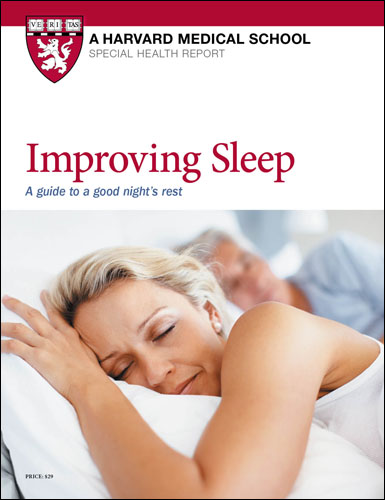
Order This Special Health Report reveals:
---------------------------------------------------------------------------------------------------------
Surgery-free pain relief for hips and knees
Hip and knee pain can keep you from the activities you love, as well as make routine tasks difficult. But there are many ways to get you moving again pain-free, without surgery. Here are some of the treatments that can help relieve hip and knee pain.
Ultrasound, phonophoresis, and iontophoresisTherapeutic ultrasound is a simple procedure that uses sound waves to increase blood flow, relax muscle spasms, and aid healing that leads to faster hip pain relief and knee pain relief. The therapist applies gel to your skin and moves an ultrasound wand over your skin around the painful area. In a special ultrasound technique called phonophoresis, medication (often hydrocortisone) is added to the gel. In a survey of orthopedic physical therapists, more than half said they would use ultrasound and phonophoresis to reduce soft-tissue inflammation (in tendinitis or bursitis, for example). These techniques are also used to manage pain, heal tissue, and help muscles stretch. Iontophoresis uses electrical currents to speed the delivery of medication to damaged tissue, or simply to reduce muscle spasms and related irritation. Patches similar to Band-Aids are placed on the skin, and a painless, low-level current is applied for about 10 to 15 minutes. You may feel warmth or tingling during the treatment. Therapeutic exerciseStrengthening the muscles around a damaged knee or hip can help reduce stress on a joint. For example, your hips have to do less work to support your body weight if your quadriceps, gluteals, hamstrings, and abdominal muscles are strong. Strong quadriceps can also take on some of the shock- absorbing work of the meniscus or cartilage in the knees. The proper balance of strength in the muscles can hold the joint in the most functional and least painful position. Flexibility exercises (to stretch and relax specific muscles) are also an important part of an exercise plan to improve joint function. Gait retrainingKnee and hip problems can disrupt your normal walk by causing pain, restricting joint movement, or weakening muscles. And a person's normal pattern of standing, walking, or running may invite joint problems. It may take many years of walking with an abnormal gait before joint injury occurs. A physical therapist can analyze your gait and help you learn to move more efficiently. Initially, the "normal" gait may feel odd. It can take practice and continued instruction before it becomes comfortable, but it will eventually become natural for you. Physical therapists may also suggest a change in shoes or ways to strengthen muscles that can help restore a more aligned gait. For more on strategies for pain-free knees and hips, plus a Special Bonus Section on knee and hip replacement, read Knees and Hips, a Special Health Report from Harvard Medical School. -----------------------------------------------------------------------------------------------------
------------------------------------------------------------------------------------------------
--------------------------------------------------------------------------------------------------------- Get the sound sleep your body needs!
Do you feel like you struggle half the night just to get a few hours of shuteye, and then wake up feeling exhausted? You're not alone. An estimated 50-70 million Americans have some type of sleep disorder. And it’s not just frustrating — not getting enough sleep can have serious consequences for your health. There’s no reason to miss out on a great night’s sleep. The experts at Harvard Medical School have created Improving Sleep: A guide to a good night’s rest, a Special Health Report that brings you the latest research on the science of sleep, plus the information you need to fall asleep faster, stay asleep all night, and wake up feeling refreshed.
Click here now to get your copy and discover:
You’ll discover what to do if you sleepwalk or sleep eat, or are prone to night terrors. You'll learn how to get the rest you need if you work nights and need to sleep during the day. Inside Improving Sleep, you’ll also find quick quizzes that help you decide if depression or anxiety is making you sleepy, and so much more. 
Order This Special Health Report reveals:
----------------------------------------------------------------------------------------------------------
Stop living with the dangers of chronicinflammation!Stop living with the dangers of chronicinflammation!Discover how you can boost resistance to inflammatory diseases and reduce your risk of heart disease, stroke, and even Alzheimer’s!
---------------------------------------------------------------------------------------------------------- Harvard Doctors RevealEverything you need to know about mild cognitive impairment
Your memories of the past. Your dreams for the future. Your ability to recall, reason, and think. It’s all in that three-pound organ between your ears—your brain. With so much at stake, protecting your brain from cognitive decline should be your highest health priority.
Understanding Mild Cognitive Impairment is here to help. The new guide from the experts at Harvard Medical School, is your indispensable handbook to understanding mild cognitive impairment (MCI), reducing its impact, and possibly preventing it from happening at all.
Yes, sometimes cognitive impairment is *reversible*
As you’ll learn in the guide, some types of MCI are reversible. For example, certain medications may cause reactions that mimic cognitive decline. Memory and other cognitive functions may be restored simply by changing medications. Or a person may have experienced a head injury, resulting in localized bleeding called a subdural hematoma. This can lead to changes in memory loss and thinking. If the blood is removed within weeks of the injury, memory function may recover. As the guide makes clear, be sure to consider all potential causes of MCI before assuming you can’t get your cognitive abilities back to where they were.
Shielding your brain against MCI
Understanding Mild Cognitive Impairment reveals how you can take action to prevent or minimize MCI. You’ll learn, for example, how getting enough sleep, exercising regularly, and lowering your stress levels can all boost your cognitive function. Giving your brain a workout through education and with mental challenges like puzzles and games can help, too. In addition, the guide explains how a traditional Mediterranean diet can lower the risk of MCI and slow the progression of dementia in people who have the condition.
The latest MCI treatment options
A lot of research is going on to find a drug treatment for MCI, but as of now there’s no medication or supplement that’s been proven effective. However, as the guide explains, there are other options. For example, cognitive training, in person or via computer, can help people with MCI develop their remaining cognitive skills. Another option is to improve cardiovascular fitness—for instance, by lowering blood pressure, reducing cholesterol, and quitting smoking. This can reduce the chance of a blood vessel becoming blocked and causing brain damage.
Get to know the fundamentals of MCI
Understanding Mild Cognitive Impairment gives you the information you need to approach MCI with confidence. The guide offers an overview of the brain’s different areas and explains how memories are created and stored. In easy-to-understand language, you’ll learn how MCI is different from dementia conditions like Alzheimer’s. You’ll also read about the risk factors for MCI, such as age, genetics, cardiovascular fitness, and depression, and how MCI is diagnosed. There’s still more to discover in Understanding Mild Cognitive Impairment, including: five key indicators of memory-related MCI • the differences between memory-related MCI and MCI that affects other functions of the brain • an overview of the six cognitive domains, such as memory, language, and attention • how brain function changes with normal aging vs. MCI and dementia • how spending time with friends and family can do wonders for your brain health • and more! ---------------------------------------------------------------------------------------------------------- What’s the best way to manage agitation related to dementia?

You notice your loved one becoming more forgetful. She cannot recall her visit with her granddaughters yesterday. She claims she took her medications this morning, yet you find them untouched in her pill case. You wonder how this mild-mannered woman has become so angry, so quickly. She is often frightened now, disoriented, and unpredictable. Yet she still remembers every detail of your wedding day, the names of your four children, and how to play her favorite piano pieces. When you sing together, time temporarily stands still.
Your loved one received a diagnosis of Alzheimer’s disease. Nights are the hardest time for her. You worry about her safety when she wanders through the house. She almost broke the door last week; you can tell her arm still hurts when you bathe her. She resists and yells at you when you take her to the bathroom. She has started to show behavioral symptoms of dementia.
Aggression and agitation in dementia
Behavioral and psychological symptoms are very common in dementia, and affect up to 90% of people living with dementia. In addition to memory changes, people with dementia may experience agitation, psychosis, anxiety, depression, and apathy. These behavioral symptoms often lead to greater distress than memory changes. When people with dementia become agitated or aggressive, doctors often prescribe medications to control their behaviors in spite of the known risks of serious side effects. The most frequently prescribed medication classes for agitation in dementia carry serious risks of falls, heart problems, stroke, and even death.
Caregivers, who often experience burnout in managing aggressive behaviors, welcome medications that can temporarily decrease agitation. Unfortunately, aggressive and agitated behavior often contributes to the decision to transition a loved one to an alternative living situation.
New research shows that nondrug therapies are more effective
According to a new study looking at more than 160 articles, nondrug interventions appeared to be more effective than medications in reducing agitation and aggression in people with dementia. Researchers found that three nonpharmacologic interventions were more effective than usual care: multidisciplinary care, massage and touch therapy, and music combined with massage and touch therapy. For physical aggression, outdoor activities were more efficacious than antipsychotic medications (a class of drugs often prescribed to manage aggression). For verbal aggression, massage and touch therapy were more effective than care as usual. As a result of this study, the authors recommend prioritization of nonpharmacologic interventions over medications, a treatment strategy also recommended by the practice guidelines of the American Psychiatric Association. Helpful tips for caregivers
To decrease agitation and aggression with dementia, caregivers can help their loved ones in the following ways:
The bottom line
To decrease agitation and aggression in people with dementia, nondrug options are more effective than medications. Physical activity, touch and massage, and music can all be used as tools to manage agitation related to dementia.
------------------------------------------------------------------------------------
9 ways to fix foot pain
Pain is a symptom common to many foot conditions, and pain medications can often help relieve foot pain. You also can try other approaches, either before resorting to pain relievers or in conjunction with them. For example, you can try an ice pack or a warm foot soak before reaching for the pain pills. In general, if your skin feels warm to the touch (indicating that your foot is inflamed and possibly swollen), apply ice. Don't apply warmth to an inflamed area because it will only increase the blood flow and make the inflammation worse.
If your feet are tired and sore and your skin feels normal or cool to the touch, try soaking your feet in a warm bath to relax and soothe them. Pharmacies sell gel packs that you can either freeze or heat in the microwave, then apply to your feet. You can also try massage (see "Foot massage," below). Gently rubbing sore muscles and joints can often provide needed relief. But don't massage a foot that is inflamed or that you think might be injured.
When it comes to pharmaceutical treatment, there are a number of different options. Some medications are topical — that is, you apply them to the skin. Others are systemic; these are usually taken in pill form. A summary of the major categories of pain relief medications follows. Be informed to ask your doctor. 1. Oral analgesics. This class of medications encompasses pain relievers, such as acetaminophen (Tylenol), which relieve pain without relieving inflammation. Be sure to follow directions because taking too much acetaminophen can cause liver failure. 2. Topical analgesics. Topical pain medications are available in lotion, cream, or gel form. They are spread on the skin and penetrate inward to relieve some forms of mild foot pain. Some topical preparations — such as those containing menthol, eucalyptus oil, or turpentine oil — reduce pain by distracting the nerves with a different type of sensation. Another group delivers salicylates (the same ingredient as in aspirin) through the skin. A third group counters a chemical known as substance P, which is a neurotransmitter that appears to transmit pain signals to the brain. These creams contain a derivative of a natural ingredient found in cayenne pepper. For that reason, they may burn or sting when first used. 3. Nonsteroidal anti-inflammatory drugs (NSAIDs). NSAIDs are available both with and without a prescription. Popular over-the-counter NSAIDs include aspirin (Bayer, Bufferin, others), ibuprofen (Advil, Motrin, others), and naproxen (Aleve). If you are taking an NSAID solely to relieve pain, expect to take a low dosage for a limited amount of time — usually until the pain is gone. If you have a condition that involves inflammation as well as pain, such as Achilles' tendinitis or a sprain, your doctor may advise you to take an NSAID at a higher dose and for a longer period, sometimes as much as several weeks. Why the difference? You can feel the pain-relieving effects of NSAIDs almost immediately, but you do not experience the full anti-inflammatory effects until a sufficient amount of the medication builds up in your bloodstream. Be aware that NSAID medications have a variety of side effects, so it is important to discuss your personal health risks with your doctor when considering their regular use. If these over-the-counter options don't solve your foot pain problems, your doctor can prescribe a variety of prescription medication and treatment options, as described below. 4. COX-2 inhibitor. A type of prescription NSAID known as a COX-2 inhibitor — such as celecoxib (Celebrex) — relieves pain and inflammation and may reduce the risk for gastric ulcers and bleeding, which sometimes make older NSAIDs difficult to tolerate. COX-2 inhibitors have their own side effects, though, so it is important to discuss your personal health risks with your doctor when considering the long-term use of these medications. 5.Nerve pain medications. Pain caused by nerve damage (neuropathy) may not respond well to acetaminophen or NSAIDs. Three commonly prescribed medications for neuropathy are amitriptyline (Elavil), gabapentin (Neurontin), and pregabalin (Lyrica). 6. Nerve blocks. A nerve block is an injection that numbs a particular nerve to prevent pain signals from reaching your brain (much as lidocaine does in a dentist's office). It's effective for severe pain or for use during a surgical procedure. 7. Corticosteroids. These medications are synthetic forms of naturally occurring hormones produced by the adrenal glands. Corticosteroids may be given in the form of pills or injections to decrease inflammation and thus relieve pain. Topical corticosteroids, applied directly to the skin, are useful only in treating rashes, not for pain due to musculoskeletal injuries. For more ways to fix your foot pain, buy Healthy Feet: Preventing and treating common foot problems, a Special Health Report from Harvard Medical School. ---------------------------------------------------------------------------------------------------------
----------------------------------------------------------------------------------------------------------------------- Before You Say “YES” to a Hip Replacement, READ THIS...
------------------------------------------------------------------------------------------------------------- Discover the steps and secrets to
|
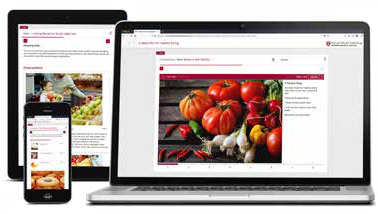
Learn anytime, anywhere!  |
The latest guidelines have made the importance of maintaining lower blood pressure numbers abundantly clear. Indeed, now nearly half of American adults are considered to have high blood pressure, with double the risk of heart attacks and strokes as well as increased risk of kidney failure, loss of eyesight, and even Alzheimer’s. You don’t have to be in that group. You can effectively and successfully lower your blood pressure.
This interactive online course will show you how. You’ll discover the strategies, the medications, and simple lifestyle changes that will make a truly significant and measurable difference.
You will understand hypertension’s causes and its effects. You’ll learn tips and techniques for reducing your blood pressure from top Harvard doctors. You’ll find a course packed with engaging videos, helpful downloadable charts, and interactive quizzes.
You’ll discover an extraordinary diet that can lower systolic blood pressure 11 points in 8 weeks! You’ll find exercises that reward your effort...ways to ease stress and improve sleep...and even how to insure the most accurate blood pressure reading.
The up-to-the-minute guidance you need to bring your blood pressure numbers down!
In this course, you’ll find...
-
an eating plan that reduces blood pressure as effectively as most medications!
-
3 cures for “getting-out-of-bed” dizziness
-
6 keys for assuring an accurate blood pressure reading
-
the surprising cause of “part-time” hypertension — and how to end it for good!
-
how to reduce stress in three minutes — or even one!
-
great “no-sweat” exercises for lowering blood pressure
-
And more!

|
This dynamic course incorporates the best strategies for lowering your blood pressure and boosting your cardiovascular health.
You’ll discover the steps that can take you further including...
|
The good news is that what’s gone up can come down. You can get your numbers in line... and you can do it with this remarkable online learning course.
Be on your way to better and lasting health with Harvard Health Publishing’s Controlling Your Blood Pressure. Don’t miss out.
You’ll learn at home — and feel at home!
 |
With Harvard Health Publishing’s Controlling Your Blood Pressure online course, you choose the time and you set the pace. The course lets you:
-
Get information you can use from a source you can trust
-
Learn from America’s leading experts when and where it’s most convenient for you
-
Watch, pause, and watch again as often as you want
-
Share the learning experience with your spouse and loved ones
-
Includes downloadable charts, quizzes, progress trackers, worksheets, and more!
------------------------------------------------------------------------------------------------------------
4 ways to boost your self-compassion
 |
Take a moment to think about how you treat yourself when you make a mistake or fail to reach a goal. If you tend to beat yourself up when things go wrong, you, like most people, can use a little more self-compassion in your life.
Forgiving and nurturing yourself seem to have benefits in their own right. Strong self-compassion can even set the stage for better health, relationships, and general well-being. So far, research has revealed a number of benefits of self-compassion. Lower levels of anxiety and depression have been observed in people with higher self-compassion. Self-compassionate people recognize when they are suffering and are kind to themselves at these times, thereby lowering their own levels of related anxiety and depression.
Get your copy of Positive Psychology: Harnessing the power of happiness, mindfulness, and inner strength
|
Learn to have self-compassion
Some people come by self-compassion naturally, but not everyone does. Luckily, it is a learnable skill. Several methods have been proposed, and training programs are being developed, to help people discover and cultivate their own self-compassion.
Here are four ways to give your self-compassion skills a quick boost:
- Comfort your body. Eat something healthy. Lie down and rest. Massage your own neck, feet, or hands. Take a walk. Anything you can do to improve how you feel physically gives you a dose of self-compassion.
- Write a letter to yourself. Think of a situation that caused you to feel pain (a breakup with a lover, a job loss, a poorly received presentation). Write a letter to yourself describing the situation, but without blaming anyone — including yourself. Use this exercise to nurture your feelings.
- Give yourself encouragement. Think of what you would say to a good friend if he or she was facing a difficult or stressful situation. Then, when you find yourself in this kind of situation, direct these compassionate responses toward yourself.
- Practice mindfulness. Even a quick exercise, such as meditating for a few minutes, can be a great way to nurture and accept ourselves while we're in pain.
For more ways to draw on your strengths and find the positive meaning in your life, review Positive Psychology, a Special Health Report from Harvard Medical School.
--------------------------------------------------------------------------------------------------------------
Living Better, Living Longer PodcastMindful eating begins with switching quantity with quality
If you find losing weight difficult, don't worry about how much you consume. Instead concentrate on eating quality foods like fruit and vegetables, lean animal or plant-based proteins and healthy fats. Then apply the portion control strategy of using smaller plates, smaller glasses and earlier eating times. These ideas come from Dr. W. Scott Butsch, Instructor in Medicine at Harvard Medical School and an obesity medicine physician. |
|
Recent Podcast Episodes
Episode 21: This year, resolve to challenge your brain Episode 20: How to take control of your blood pressure today Episode 19: Do you or a loved one have prostate cancer? You'll want to listen to this |
|
Lose Weight and Keep It OffFeatured content:
|
-----------------------------------------------------------------------------------------------
Are you getting enough sleep?
 |
Maybe you stay up past midnight watching TV or checking your smartphone while lounging in bed. Or perhaps you snuggle under the covers and close your eyes at a decent hour, but then toss and turn, unable to fall asleep. Whatever the reason, the results are familiar to many people — feeling unrefreshed and maybe even a bit cranky when you wake up the next morning. According to the CDC, about one in three adults doesn't get enough sleep.
"Some people have trouble falling asleep. But others choose to stay awake and end up chronically sleep deprived," says Dr. Sogol Javaheri, a sleep specialist at Harvard-affiliated Brigham and Women's Hospital. When you don't sleep enough, feeling tired and bleary-eyed is only part of the problem. People who consistently get less than six hours of sleep nightly face a higher risk of heart disease as well as other, often co-occurring conditions such as diabetes and obesity.
|
Improving SleepFeatured content:
|
-----------------------------------------------------------------------------------------------
-----------------------------------------------------------------------------------------------
A strong core: The simple, flexible, and portable workout
Strengthening your core muscles doesn’t have to be overwhelming. You can do these simple exercises anywhere and adapt them as you gain fitness.
The office workout
The following routine is a great way to ease into core work. You can do these four exercises at work, without your colleagues being any the wiser. You can do these exercises at home, too, thanks to simple variations. The front plank, for example, can be done while either leaning on your desk or using the kitchen counter to support your weight.
Get
your copy of Gentle Core Exercises: Start toning your abs, building your back muscles, and reclaiming core fitness today
|
Equipment needed: Desk (a table or countertop is also fine), exercise mat, and sturdy chair.
|
|
|
|
To learn more about building a strong core, buy Gentle Core Exercises: Start toning your abs, building your back muscles, and reclaiming core fitness today, a Special Health Report from Harvard Medical School.
| Share this story: |
|
Featured in this issue |
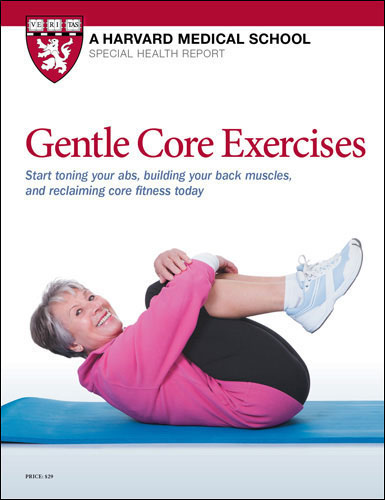
----------------------------------------------------------------- |
Gentle Core ExercisesFeatured content:
|
Learn the smart way to reshape your future!
Slim without sacrifice...with foods you enjoy...and with results you’ll love.
Boost your health in just weeks — with dividends that will last a lifetime!
Dear Reader, Pick up a sack of potatoes. Carry it for ten minutes. You soon feel the strain. If you’ve put on “a few pounds,” your body is carrying that weight day after day. And that puts a strain on your heart, your joints, and more. Shedding those added pounds can end joint pain, reduce your risk of heart attack and stroke, boost your energy, and protect you against more than 50 chronic illnesses, including heart disease, diabetes, and certain cancers. This Special Health Report will help you stay your healthiest best. You’ll find smart eating strategies that will take off the inches and add years to your life. You’ll learn how to avoid diet setbacks and make each meal work for you. ORDER NOW for a 30% savings. Every page sets you up for success. You’ll find foods, menus, and recipes filled with flavor and variety. And you’ll gain the know-how to outsmart the common obstacles that can derail your progress. You’ll discover... ...the healthiest and most satisfying foods. You’ll find that you don’t have to count calories to lose weight. You’ll be introduced to great options and simple, easy substitutions. You’ll get helpful tips for dining out, and variety-filled menus and recipes for tempting meals at home. ...the “secrets” to sticking with it! You’ll learn how to stay motivated and sidestep the pitfalls. You’ll get tips for reorganizing your kitchen (Where did I put those chips?). You’ll read how to avoid temptation at parties, simplify meal prep, and subdue those empty-calorie cravings. ... honest assessments of today’s plans, programs, and more. In the report, Harvard doctors share the facts about the leading diet programs and home-delivered meal plans. You’ll be briefed on the latest advances in bariatric surgery, how the new weight-loss medications compare, and more. Don’t miss out! Send for your copy of Lose Weight and Keep It Off now! 
Howard E. LeWine, M.D. P.S. Harvard Medical School was again ranked as the country’s #1 Medical School for Research by US News & World Report. --------------------------------------------------------------------------------------------------------------
--------------------------------------------------------------------------------------------------------------------------
Although messages about diet and nutrition are everywhere these days, it isn’t always easy to eat right and choose the healthiest foods. Now, in this interactive and informative online course from Harvard Medical School you’ll get a simple, easy-to-follow plan that will help you get healthier in just 6 weeks. Through engaging videos, interactive slides, downloadable charts, and challenging quizzes, you’ll see how to help your health with food. You’ll learn which meals can help to reduce your risk of high cholesterol and may even help improve your memory. Quick tips for choosing the healthiest breakfast cereal, making a yummy, yet healthy sandwich, and a simple trick that helps make sure you don’t overeat at dinner. Week by week, meal by meal, you’ll uncover the proven ways to fuel your body for better health. Learning online is a fun, fascinating way to understand new information. In this course, you’ll love discovering:
This research-based plan helps you improve your health and well-being by eating right and moving more. You’ll get everything you need to succeed, including:
Follow this simple plan and you’ll reduce your risk of chronic disease. In fact, men and women whose diets closely followed the plan cut their risk of heart disease by 33% or more. Don’t miss out. Be on your way to better health with Harvard Health Publishing’s NEW online course: 6-Week Plan for Healthy Eating!
Enjoy learning anytime, anywhere! Harvard Health Publishing’s 6-Week Plan for Healthy Eating online course let’s you:
Learn from top health and nutrition experts at your convenience Watch, pause, and watch again as often as you want — whenever you want
------------------------------------------------------------------------------------------------------
Discover the advances that are changing the face of skin careLearn the secrets to more beautiful skin at any ageFind out how — starting right now — you can have
softer,
|
Dear Reader, Now you can take care of your skin as never before. This Special Health Report shares the exciting advances that are bringing a fresh look to skin care. You’ll see how you can enjoy skin that is blemish-free...skin with fewer visible lines and wrinkles...skin with a healthy glow and a more youthful resiliency and softness. Now you can lose the years — without the fears! The report reveals and explains more than 40 safe and effective treatments and techniques that can make your skin look years younger...without the pain of chemical peels or the risk of cosmetic surgery. The report will introduce you to a painless procedure that can shrink undereye bags...a new laser technique that can dramatically erase deep lines and wrinkles...a 60-minute therapy for reversing sun damage and diminishing age spots...and much, much more. You can say goodbye to the itch and embarrassment of common skin problems! The doctors of Harvard Medical School will show you how to quell and conquer a dozen common skin conditions, including adult acne, contact dermatitis, eczema, psoriasis, and athlete’s foot. You’ll be briefed on breakthrough medications for rosacea and psoriasis, and a surprising and quick remedy for warts. You’ll keep your skin safe, sound, and looking its best. Talk about saving your skin! The report spotlights 20 smart steps that will protect your skin from sun damage, winter dryness, environmental irritants, skin cancer, and more. You’ll learn the worst thing you can do to your skin...how to cut your risk of melanoma in half...and the four musts to look for in any moisturizer. Plus, the report will tell you about the antioxidants that protect against sun damage, and the best soap for sensitive skin. Get the facts you need for the skin you want. Order your copy of Skin Care and Repair today! |
------------------------------------------------------------------------------------------------------
|
|
Are organics worth it?
 |
Organic foods continue to grow in popularity. Organic sales broke through the $50 billion mark in 2018 for the first time, according to the Organic Trade Association. Organic foods are clearly healthier for the planet, because they support an agricultural system that avoids synthetic fertilizers and pesticides and promotes a more biodiverse ecosystem, with attention to the health of waterways, soil, air, wildlife, farm workers, and the climate.
However, there isn't clear evidence that organic foods are also healthier for people. An observational study published in JAMA Internal Medicine in 2018 followed nearly 70,000 French adults and found that those with the highest consumption of organic foods had a 25% reduced risk of cancer over the seven years of the study. But this type of a study doesn't prove cause and effect, and there were some shortcomings inherent in the methodology, so more research is needed.
One drawback for many people is that organic foods come at a higher price. If you're interested in organic production, focus your food dollars where it matters the most—by avoiding the types of fresh produce most likely to retain pesticide residue. The Environmental Working Group publishes a list called the Dirty Dozen that names the fruits and vegetables with the highest levels of pesticide residue when grown conventionally:
1. strawberries
2. spinach
3. kale
4. nectarines
5. apples
6. grapes
7. peaches
8. cherries
9. pears
10. tomatoes
11. celery
12. potatoes
13. hot peppers (an extra item in 2019).
The Environmental Working Group also publishes a list called the Clean Fifteen, which names the foods that have the lowest levels of residues and are therefore fine to buy in conventional form:
1. avocados
2. sweet corn
3. pineapples
4. sweet peas, frozen
5. onions
6. papayas
7. eggplants
8. asparagus
9. kiwis
10. cabbages
11. cauliflower
12. cantaloupes
13. broccoli
14. mushrooms
15. honeydew melons.
If you prefer organic and your budget can handle it, that's fine. But the most important step you can take toward a healthier diet is simply eating more fruits and vegetables, whether they're organic or not. The health benefits of eating more produce—even if it is conventionally grown—far outweigh the downsides of higher pesticide residues. And just because snack foods such as chips and cookies have labels that say organic, that does not equal healthy.
For more information about buying and eating organic food, read A Guide to Healthy Eating, a Special Health Report from Harvard Medical School.
--------------------------------------------------------------------------------------------------------------
Cataract surgery: What to expect before, during and after
 |
Cataract surgery is one of the oldest procedures still being performed today. Ancient Egyptians used a surgical technique known as "couching," in which a sharp needle was used to slide the cloudy lens out of the field of vision and into the vitreous cavity in the back of the eye. Later, the Romans used a method called "needling" to slice up the cataract into pieces small enough to be reabsorbed.
Both procedures improved vision, but they couldn't provide completely clear sight because they didn't replace the lens. That breakthrough didn't come until the 1940s, when English ophthalmologist Harold Ridley invented the intraocular lens.
Unlike the surgeries of antiquity, today's cataract surgery uses small incisions and suction to remove the cloudy lens, and then replaces it with an artificial plastic lens.
Get your copy of Clearing the Fog of Cataracts
|
Lens extraction is done using one of two procedures: phacoemulsification or extracapsular surgery. After your cloudy lens is removed, it will be replaced with an implanted clear artificial lens called an intraocular lens (IOL). Your eye doctor will select a lens with appropriate focusing power based on measurements of the eye that were made before surgery, as well as discussion of your lifestyle needs.
Preparing for cataract surgery
Cataract surgery is generally safe, but if you have a condition such as high blood pressure, diabetes, or heart disease, your eye doctor might want you to have it under good control before you go ahead with the procedure.
Cataract surgery doesn't generally cause major bleeding, though your ophthalmologist might recommend that you stop taking aspirin or anti-clotting drugs ahead of your procedure as a precaution. But don't stop taking any medications on your own without first checking with the doctor who prescribed them.
Let your eye surgeon know if you take or have ever taken an alpha blocker, such as alfuzosin (Uroxatral), doxazosin (Cardura), silodosin (Rapaflo), tamsulosin (Flomax), or terazosin (Hytrin).
Your surgeon may prescribe antibiotic or anti-inflammatory eyedrops for a few days before your procedure to reduce the risk of complications.
What to expect
Cataract surgery is typically performed as an outpatient procedure. You'll most likely spend two to three hours at the surgical facility. The procedure itself usually lasts less than half an hour.
You will be awake, but you may receive a sedative intravenously to relax you. You'll get local anesthesia to prevent block pain. Operating room staff will apply various drops to the eye before and after the surgery, according to the doctor's orders.
Afterward, the surgeon may cover the eye with a bandage or shield, which you can remove later that day or on the following day. You will rest in the recovery area for about 30 minutes, and then will receive instructions on how to care for your eye. Once you're ready to go, someone will need to drive you home.
Recovery at home
You will see your ophthalmologist for several postoperative visits—typically one day, one week, one month, two months, and six months after surgery. At each appointment, the doctor will examine your eye, test your visual acuity, and measure your eye pressure. Within one to three months after surgery, your doctor will determine your eyeglass prescription if recommended for driving or reading.
For a few weeks after your surgery, you will apply prescription antibiotic and anti-inflammatory eyedrops several times a day to prevent infection and reduce inflammation. For about a week after surgery, you'll wear an eye shield to protect your eye while you sleep. Sunglasses to wear outside may be recommended or provided.
You should be able to return to most sedentary activities on the night of your surgery. Driving is typically allowed once your doctor has tested your vision the day after surgery. How long you must wait to exercise depends on the type of surgery you had.
For more tips on preparing for cataract surgery, check out Clearing the Fog of Cataracts, a Special Health Report from Harvard Medical School.
---------------------------------------------------------------------------------------------------------------
The ideal stretching routine
Stretching promotes flexibility and helps your joints maintain a healthy range of motion—and in doing so, also lowers the chances of joint and muscle strain. But how often should you stretch? How long should you hold a stretch? And how many times should you do each stretch?
A panel of experts convened by the American College of Sports Medicine (ACSM) reviewed a wide range of studies to help answer these questions. Stretching has been studied much less rigorously than other forms of exercise, so the science is not as strong. But, based on the evidence, the panel agreed that:
To learn more about improving your flexibility, read Stretching, a Special Health Report from Harvard Medical School
|
Six tips for safe stretches
Virtually every activity you do relies on ease of motion. Stretching can help in numerous ways. It can often relieve back pain, stiff necks, and sore knees when tight muscles are to blame. It can counteract too much sitting whether you're doing it for work or a pleasurable activity. If you're a runner, a tennis player, a golfer, a hiker, or a biker, the right stretching program may set you on a path toward better performance. And as you age, stretching can help keep you active and flexible, making it easier to accomplish innumerable everyday tasks involving walking, climbing stairs, or reaching. While it's tempting to skip right to the stretches, it's best to think about safety first. These will help you make the best flexibility gains possible, while reducing your risk of injuries.
To learn more about improving your flexibility, read Stretching, a Special Health Report from Harvard Medical School. Image: Tomwang112/Getty Images
|
Featured in this issue |
|
Stretching: 35 exercises to improve flexibility and reduce pain
Featured content:
• Stretching: The basics • Safety first • Stretching to ease pain • Six questions (and answers) about stretching exercises • SPECIAL SECTION: Warming up for sports with dynamic stretches • Static
stretches • Floor stretches
-------------------------------------------------------------------------------------------------------------------------
Don’t let depression rob you of life’s joys.
Discover 12 strategies to break the chains of depression and free yourself to live every day to the fullest!
Dear Reader, Depression can sap joy from life. It can leave you out of touch. But, as never before, help — and happiness — are within reach. A breakthrough report that will make you smile — again. In this Special Health Report, Harvard doctors share 12 strategies to dispel the symptoms of depression. These are strategies that will rekindle optimism and self-esteem, renew your energy and enthusiasm, and reconnect you with the people and pursuits you love most. Depression is treatable — and beatable! As never before, doctors have the tools to address major depression, persistent depressive disorder, and bipolar disorder. You’ll learn how today’s advances can shatter depression’s grip and help you — or a loved one — regain purpose, happiness and peace-of-mind. You’ll meet the strategies that can change your way of thinking! The most effective strategies for depression often combine drugs and therapy. You’ll get clear explanations of the three leading therapies and unbiased evaluations of more than 40 prescription medications. You’ll be introduced to a behavioral therapy that outperforms many medications. You’ll find how the leading antidepressants compare. You’ll learn which mood stabilizer is most effective for bipolar disorder, and what supportive psychotherapy is best for resolving the grief of a recent loss. A dozen strategies with one goal. Edited by Harvard doctors who are practicing physicians, the report will help you work with your own doctor to select the best approach for you. You’ll be able to assess which strategies offer you the most promise, whether to use a single strategy or complementary strategies in tandem. Not only will you be briefed on drugs and psychotherapy, but you’ll discover an emerging therapy that doesn’t give you time to be depressed, the two best exercises to lift the weight of depression — an often overlooked therapy with a 90% response rate — and even six foods that can improve your mood. Don’t let depression steal another day. Send for your copy of Understanding Depression now. |
----------------------------------------------------------------------------------------------------------------------------
4 ways to keep moving with joint pain
 |
If you suffer from joint pain, exercise may seem like the last thing you want to do, or need to do. But the right exercises performed properly can be a long-lasting way to subdue ankle, knee, hip, or shoulder pain. For some people, the right exercise routine can even help delay or sidestep surgery.
While exercise is great medicine, it only works if you carve out time to do it regularly. And sometimes the hardest part of a workout is getting started. Here are four ways to help you get your dose of physical activity:
Get your copy of The Joint Pain Relief Workout: Healing exercises for your shoulders, hips, knees, and ankles
|
- Carve out the time. Skip several half-hour TV shows a week or work out while watching. Get up half an hour earlier each day for a morning workout. If big blocks of time aren't falling into your lap, try 10-minute walks, or half a workout in the morning and half in the evening.
- Build activity into your daily routine. Take stairs, not elevators. When commuting, get off the bus or subway a stop or two ahead, or park farther away from your workplace. While on the phone, try a few stretches, pace, or do simple exercises like lunges, squats, and heel raises. Bike or walk to work. When running errands within a reasonable radius, park your car in one spot and walk to different shops. Replace your desk and desk chair with a standing desk. Try substituting a stability ball for your desk chair a few hours a day. Rake leaves and shovel snow instead of using a leaf blower or snow blower.
- Find a workout buddy. Workouts with a friend can be more enjoyable, plus you're less likely to cancel on the spur of the moment.
- Bugged by bad weather or early darkness? Buy equipment necessary for exercising at home, join a gym, try a class in your community, or walk the mall or an indoor athletic track at a local school.
When motivation flags, remind yourself of your goals, plan small rewards, ask a friend to check up on you, or consider working out with a personal trainer.
For more on developing and mastering joint pain relief workout, read The Joint Pain Relief Workout, a Special Health Report from Harvard Medical School.
------------------------------------------------------------------------------------------------------
Don’t take chances with your brain health!
Fight cognitive decline with this guide from Harvard Medical School.
Dear Reader, Do you sometimes have trouble remembering the name of your favorite movie? Or dinner plans with your spouse? Are you noticing that you’re having more difficulty finding your words? If so, it could be the result of normal aging — or it could be a condition called mild cognitive impairment (MCI). You owe it to yourself and your family to get the facts about MCI and learn what you can do to keep your brain healthy. Fortunately, learning about MCI is now a lot easier thanks to Understanding Mild Cognitive Impairment, a guide from the experts at Harvard Medical School. This information-packed resource tells you everything you need to know about MCI, including: How you can reverse MCI. A diagnosis of MCI doesn’t necessarily mean you’re stuck with it. As you’ll discover in the guide, MCI is, in some cases, reversible. For example, certain types of medications can cause memory problems. Your doctor may be able to offer you a different drug therapy that won’t affect your memory. Depression is also linked to MCI. It may be possible to alleviate symptoms of MCI by treating the depression. Steps you can take to protect yourself from MCI. Understanding Mild Cognitive Impairment offers simple tips to protect your brain health. Getting better sleep, lowering your stress levels, and adopting a Mediterranean-style diet have all been shown to help. As the guide explains, it’s also beneficial to keep learning new things and challenge your brain with activities like puzzles, playing a musical instrument, and learning a new language. How MCI is treated. One approach to treating MCI is cognitive training. Offered in group or individual settings, or even via computer, cognitive training can help individuals make the most of their remaining cognitive skills. The guide also gives you strategies for improving your cardiovascular health. Achieving cardiovascular fitness is important because blockages in your blood flow can cause brain damage and speed up cognitive decline. Everything you need to know about MCI. Understanding Mild Cognitive Impairment, is a handy reference that gives you all the facts about MCI. You get a complete overview of the different parts of the brain, so you understand how each area supports cognition. You’ll learn how MCI is a form of cognitive decline that falls in a gray area between normal aging and dementia. And you’ll read about the different kinds of MCI, the risk factors for MCI, and how MCI is diagnosed. If you or a loved one are facing MCI — or worried you might someday — it’s essential that you get informed. Order Understanding Mild Cognitive Impairment now and discover how you can help safeguard your brain health for years to come.
|
------------------------------------------------------------------------------------------------------
A troubleshooting guide to neck pain
Discover the breakthrough steps that can “pain-proof” your neck and give you fast relief from the agony and anxiety of neck pain.
Dear Reader, Does your neck feel stiff in the morning? Do your neck muscles sometimes seize painfully without warning? Maybe a dull ache and tightness in your neck is a constant companion? Whatever form neck pain takes, when it strikes you want relief... you want to restore full motion quickly, and you don’t want pain to return. This Special Health Report will show you how to get what you want — effectively and successfully. Send neck pain packing — with a one-way ticket! Neck Pain will show you how to quell and conquer your neck pain...identify its causes...accelerate recovery...and protect against recurrence. The report will prepare you to address pain symptoms caused by strain, by age-related ailments, or by injury. You will learn how to work with your doctor for a clear diagnosis. And you’ll be briefed on the latest advances in medications, surgery, as well as complementary and alternative medicine. You’ll never take neck pain lying down again! You may already know that doctors now discourage bed rest and immobility for neck pain. This Special Health Report explains why and will introduce you to a remarkable self-help program that’s changing thinking, changing lives, and proving to be the single best way to speed recovery. You’ll discover which pain-relieving medicines are the safest and swiftest. You’ll be alerted to one medication anyone over 65 should avoid...you’ll read why women are more prone to neck pain... the danger of “too much care” for whiplash...plus six symptoms that signal a medical emergency. Enjoy a future free and secure from the fear of neck pain! And a bonus section delivers ten simple steps that can stop pain from ever getting started. This valuable “here’s how” chapter illustrates and demonstrates how to lessen the stress and strain on your neck at home and on the road...at work and even while playing your favorite sport. You don’t have to put up with neck pain! Banish it! Send for your copy of this new Special Health Report today!
-------------------------------------------------------------------------------------------------------
|
Beat and defeat the aches and anxiety of leg pain!
Harvard Medical School doctors share the keys to accurately diagnosing, effectively treating, and successfully preventing 28 painful leg problems.
|
Dear Reader,
Has leg pain ever kept you off your feet? If so, you know the frustration — and the worry.
When you can’t walk without pain, it can become difficult to work, play sports, exercise, or even climb a single set of stairs. If the damage is significant enough, it can lead to permanent disability.
You can have legs that are pain-and-problem-free!
The conditions that contribute to leg pain can range from fractures, muscle tears, and sprains, to long-term problems caused by osteoarthritis, peripheral neuropathy, and vascular disease.
This Special Health Report is designed to help you resolve both the pain and the problem. Healing Leg Pain will take you from symptoms to source to solution. You’ll find how to accelerate treatment, avoid recurrence, and assure renewed leg strength and wellness.
You can get a ‘leg up’ on leg pain!
More than any part of your body, your legs respond to care that is active and proactive. You’ll learn to work with your physician to pinpoint the cause of your condition and initiate effective treatment.
You’ll find take-charge ways to prevent PAD. You’ll learn an easy at-home therapy to ease Achilles tendinitis. You’ll read about a hands-on test to diagnose a meniscal tear...3 ways to decrease your risk for peripheral edema...and techniques to quickly assess and address dangerous deep vein thrombosis.
You’ll discover the advances that can put leg pain behind you!
Healing Leg Pain will tell you about emerging treatments and state-of-the-art procedures that can bring lasting pain relief, assure confident mobility, and keep your legs looking and feeling their best.
You’ll learn about a strategy to fully relieve IT band syndrome within six weeks. You’ll find two non-surgical approaches to treat ACL injuries. You’ll be briefed on a breakthrough that speeds healing from a hamstring tear...a newly-approved device to quiet RLS...and effective medications for knee bursitis.
You’ll get guidance you can depend on for legs you can rely on!
This report comes to you from Harvard Medical School. It is information you can trust — and use. From the first page, you’ll find clear and instructive guidance that will help you understand the treatment options and preventive measures that best suit your condition and your concerns.
From coping with muscle cramps and shin splints...to quelling the pain of sciatica and tendinitis...to preventing the disabling consequences of edema or osteoarthritis, Healing Leg Pain offers help, hope, and direction.
Send for your copy of Healing Leg Pain now. Don’t wait. It’s the right step to take!


Stop living with the dangers of chronic inflammation!
Discover how you can boost resistance to inflammatory diseases and reduce your risk of heart disease, stroke, and even Alzheimer’s!
Dear Reader, If you’ve ever cut your finger or been stung by an insect, you’ve experienced inflammation. This acute inflammation is triggering a response within your body to halt and heal the injury. But there’s another form of inflammation that doesn’t halt and heal...it is inflammation that can hurt and harm. What do today’s most challenging diseases have in common? Chronic inflammation. Scientists now know that chronic inflammation plays a central and inciting role in heart disease, rheumatoid arthritis, stroke, inflammatory bowel disease, cancer, and more. This is the inflammation you cannot see. Inflammation that doesn’t heal. Inflammation that’s not only chronic in nature, but costly in its consequences. You can control and conquer chronic inflammation! From chronic joint ailments to Crohn’s disease...from diabetes to dementia...from asthma to atherosclerosis, chronic inflammation can initiate and accelerate illnesses that are often totally avoidable. With this new downloadable report, you’ll understand how, unchecked, chronic inflammation precipitates damage. Most importantly, you’ll learn how to detect chronic inflammation...how to deflect its effects...and defeat its causes. Practical guidance you need for the protection you want — and deserve! You’ll read about the factors that contribute to chronic inflammation...the role of genetics and the environment...the foods that stimulate inflammation...and the one regular check-up that can forestall inflammation near your heart. You’ll be introduced to a new test that reflects the levels of chronic inflammation in your body...a new drug that targets cardiovascular inflammation...and an affordable daily supplement with powerful anti-inflammatory properties. Plus 24 more strategies that will “fire-proof” you from chronic inflammation. Understanding Inflammation will brief you on the most effective medications to dampen the body’s inflammatory response. You’ll discover a host of health habits to defend against inflammation including the top foods to reduce the risk of chronic disease...the most effective exercises...and a surprisingly easy step that can quell inflammation and lift your spirits. You can protect yourself from chronic inflammation. You can do it effectively. You can do it successfully. Don’t wait. Send for you copy of this informative and empowering report today!
|
---------------------------------------------------------------------------------------------------------------------------
Harvard Medical School experts reveal:
Ways to keep your mobility and independence as you age
Dear Reader, A scary thing about getting older is the thought of losing your independence. The statistics are frightening: 25% of your muscle mass is gone by age 70 — a major reason people lose their independence — and the majority of people who break a hip never fully regain their independence. But there’s no reason to give up or give in to the symptoms of aging. There is so much you can do to improve your chances of staying active and living independently in your own home for your whole life. That’s why Harvard Medical School experts have created Mobility and Independence. This Special Health Report is filled with proven strategies to help you ease pain, build bone and muscle, and boost your balance so you can live on your own and stay in your own home. Click here now to learn about:
Plus, you’ll get a special bonus section that reveals how what you eat affects how you move! Did you know that a diet low in fruits and vegetables is linked to higher rates of frailty as you age? Or that as you age, your need for calories declines, but your need for nutrients increases? In this special section, you’ll see how to make every meal count for better health, mobility, and independence. Harvard Medical School’s Mobility and Independence is a must-read for anyone who wants to help ensure they can live an active, independent life.
-------------------------------------------------------------------------------------------------------------------------
|
Tips to measure your blood pressure correctly
To determine whether you have hypertension, a medical professional will take a blood pressure reading. How you prepare for the test, the position of your arm, and other factors can change a blood pressure reading by 10% or more. That could be enough to hide high blood pressure, start you on a drug you don't really need, or lead your doctor to incorrectly adjust your medications. National and international guidelines offer specific instructions for measuring blood pressure. If a doctor, nurse, or medical assistant isn't doing it right, don't hesitate to ask him or her to get with the guidelines.
Here's what you can do to ensure a correct reading:
There are times to break these rules. If you sometimes feel lightheaded when getting out of bed in the morning or when you stand after sitting, you should have your blood pressure checked while seated and then while standing to see if it falls from one position to the next. Because blood pressure varies throughout the day, your doctor will rarely diagnose hypertension on the basis of a single reading. Instead, he or she will want to confirm the measurements on at least two occasions, usually within a few weeks of one another. The exception to this rule is if you have a blood pressure reading of 180/110 mm Hg or higher. A result this high usually calls for prompt treatment. It's also a good idea to have your blood pressure measured in both arms at least once, since the reading in one arm (usually the right) may be higher than that in the left. A 2014 study in The American Journal of Medicine of nearly 3,400 people found average arm- to-arm differences in systolic blood pressure of about 5 points. The higher number should be used to make treatment decisions. In general, blood pressures between 160/100 mm Hg and 179/109 mm Hg should be rechecked within two weeks, while measurements between 140/90 and 159/99 should be repeated within four weeks. People in the prehypertension category (between 120/80 and 139/89 mm Hg) should be rechecked within four to six months, and those with a normal reading (less than 120/80 mm Hg) should be rechecked annually. However, your doctor may schedule a follow-up visit sooner if your previous blood pressure measurements were considerably lower; if signs of damage to the heart, brain, kidneys, and eyes are present; or if you have other cardiovascular risk factors. Also, most doctors routinely check your blood pressure whenever you go in for an office visit. For more on getting your blood pressure under control, buy Controlling Your Blood Pressure, a Special Health Report from Harvard Medical School. Image: cheyennezj/Getty Images
|
Featured in this issue |
|
Controlling Your Blood PressureFeatured content:
---------------------------------------------------------------------------------------------
What’s the one prescription that can lower your risk for 5 major diseases — with NO side effects?
|
---------------------------------------------------------------------------------------------------------------------------
Don’t let joint pain keep you from enjoying life
Dear Reader, Sore, throbbing joints can make life difficult. About all you can think of doing is heading for the couch and sitting there till the pain goes away. But sitting can actually make joint pain worse! Hours of sitting tighten hip flexor and hamstring muscles and stiffen the joints. Tight hip flexors and hamstrings can affect gait and balance, making it harder to walk — or even making you more likely to fall. That’s why experts at Harvard Medical School created The Joint Pain Relief Workout. This remarkable book brings you 47 targeted joint exercises for shoulders, hips, ankles, and knees that help reduce pain and stiffness and improve flexibility. You’ll get photos of each exercise, along with lists of tips and techniques, the number of repetitions you should do, and even ideas for making the moves easier or harder depending on your fitness level. Plus, included in your Joint Pain Relief Workout are 2 special extras: #1: Walking plan and program: If joint pain is making you more sedentary, try the special walking plan on page 10 of The Joint Pain Relief Workout. You’ll see how to safely increase your physical activity — why it’s minutes, not miles, that matter most — plus get 10 ways to up your motivation to move more. #2: Wrist & elbow mini-workout: Don’t let tennis elbow or golfer’s elbow or your 9-to-5 office routine sideline you. On page 43, you’ll find four exercises for keeping wrists and elbows moving freely — and you’ll even get an easy exercise to strengthen your hand. 
Don’t miss this special report. Get your copy of The Joint Pain Relief Workout today and SAVE 30% off the $29 cover price. There’s no risk. Order now! Sincerely, Howard E. LeWine, M.D. P.S. Click here to see the joint you should strengthen to help improve your balance.
-------------------------------------------------------------------------------------------------------
|
Finally! The truth about cataracts and cataract surgery.
Harvard doctors reveals the startling facts about cataracts... what to do if you get diagnosed... surgery options... plus how to enjoy crystal-clear eyesight at any age.
Dear Reader, Are there times you notice your vision is blurry... and you worry it could be cataracts? Vision loss is a scary thing. It can mean more accidents, having trouble with everyday tasks, and even the loss of your precious independence. And, yes, cataract surgery is an option. It’s got a great success rate and few complications. But who really wants to go under the knife? Especially when it comes to your delicate eyes? Well, here’s great news. Even if you develop cataracts, there are simple steps you can take to continue to live an independent and active life without surgery. And, better yet, proven ways to never develop cataracts in the first place... and hold on to your sharp vision at any age. Now Harvard doctors reveal all the startling facts about cataracts in the new guide Clearing the Fog of Cataracts. Cataract surgery can restore your crystal clear eyesight. But is it right for you? Believe it or not, even if you’re diagnosed with cataracts, you may never need surgery. Now you can discover how to delay or even “skip” surgery with simple at-home solutions. You’ll also find out everything you need to know if you decide surgery is necessary, including how to find the right surgeon, how to prepare for surgery, and how to speed up your recovery and get back to your life faster. Best of all, you’ll discover how to prevent cataracts and make sure your eyes stay clear, sharp, and healthy... even if you live to 120! In this special guide, you’ll find out the latest, proven solutions including:
Clearing the Fog of Cataracts clears away the confusion and misinformation around cataracts. Discover the truth about whether you really need cataract surgery. Plus resources to find the right surgeon and a step-by-step guide to everything you need to know about surgery if you choose to have it. Even better, you’ll find out the secrets to preventing cataracts and maintaining your youthful crystal-clear vision at any age. If you’re concerned about developing cataracts or you’ve already been diagnosed, be sure to order Clearing the Fog of Cataracts today! 
-------------------------------------------------------------------------------------------------------------------------
Treating Upper Back PainUpper back pain can be caused by stiffness in the neck, weakness in shoulder blades & poor posture. Understanding the cause of your upper back pain can help you figure out the best treatment option.
Take a look at our guide to learn how you can easily relieve & prevent upper back pain at home.
---------------------------------------------------------------------------------------------------------------------------
Don’t let joint pain keep you from enjoying life
|

Many people consider addiction to be a problem of personal weakness, initiated for self-gratification and continued because of an unwillingness or lack of sufficient willpower to stop. However, within the medical and scientific communities, the notion that pleasure-seeking exclusively drives addiction has fallen by the wayside. Clinicians and scientists alike now think that many people engage in potentially addictive activities to escape discomfort — both physical and emotional. People typically engage in psychoactive experiences to feel good and to feel better. The roots of addiction reside in activities associated with sensation seeking and self-medication.
People allude to addiction in everyday conversation, casually referring to themselves as “chocolate addicts” or “workaholics.” However, addiction is not a term clinicians take lightly. You might be surprised to learn that until the current Diagnostic and Statistical Manual of Mental Disorders, 5th Edition (DSM-5), the term addiction did not appear in any version of the American Psychiatric Association’s diagnostic manual, the reference book that physicians and psychotherapists use to identify and classify mental health disorders. In this most recent edition, addiction is included as a category and contains both substance use disorders and non-substance use disorders, such as alcohol use disorder and gambling disorder, respectively.
--------------------------------------------------------------------------------------------------------------------------
Enjoy restful sleep once again!
Harvard doctors share top strategies to defeat insomnia, snoring, obstructive sleep apnea, and 11 other common sleep disturbances!
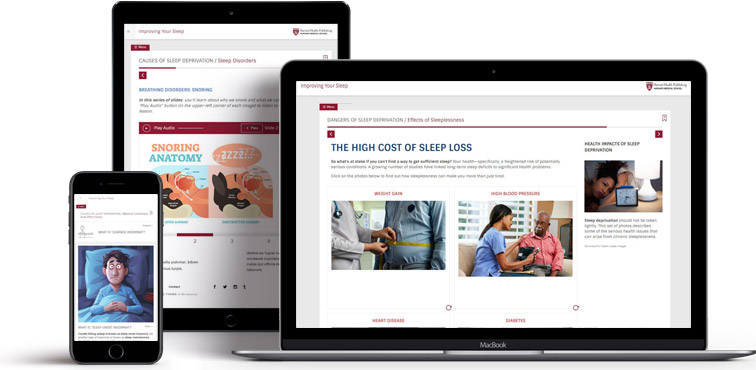
Learn anytime, anywhere!  |
Although our sleep patterns change over time, our need for sleep doesn’t. A good night’s sleep is essential for your good health, for keeping you alert and energetic, and for building your body’s defenses against infection, chronic illness, and even heart disease.
Improving Your Sleep, the newest interactive course from Harvard Health Publishing, will show you how to overcome the obstacles interfering with the good night’s rest you want and your body needs.
You’ll find why sleep often eludes us as adults. You’ll explore habits and conditions that can rob you of peaceful slumber. And most important, you’ll learn the changes you can make and steps you can take to restore consistently restful and restorative sleep.
Is snoring causing strife? Could sleep apnea be threatening a loved one’s life — or yours? The course provides instructive guidance to address these sleep breathing disorders as well as other common sleep disturbances including Restless Leg Syndrome, sleep/wake cycle disorders, narcolepsy, jet lag, and even sleepwalking.
You don’t have to dream of a good night’s sleep. This new course will make it a reality!
---------------------------------------------------
Find the weight-loss plan that works for youYou’ve tried different diets — and have even been exercising regularly — but those extra pounds won’t budge. Don’t give up. It may be that you haven’t yet found the weight-loss strategies that work for you. “Everything works for some people, but no treatment is equally effective for everyone,” says Dr. Lee Kaplan, director of the Obesity, Metabolism and Nutrition Institute at Massachusetts General Hospital. “No method is fundamentally better than any other. The key is finding out which therapy is best for you, and that takes trial and error.”
There are many ways to approach weight loss. Of course, diet and exercise should be first. There is no shortage of diets to try: low-calorie, low-carb, fill-up-first-with-bulky-foods, and weight-loss plans with prepackaged foods. Beyond diet, exercise helps burn calories. Getting more sleep and lowering your stress level with biofeedback or meditation may be helpful. If you are easily discouraged, studies suggest that a support program may increase your chance of success. Options include phone, Internet, or group support, and in-person coaching. For some people, hunger-suppressing medications or weight-loss surgery can help them lose a significant amount of weight and keep it off. Even if you don’t reach your ideal weight-loss goal, you want to succeed in living a heart-healthy lifestyle. And that means being physically active, even if you don’t shed a pound or lose an inch. “Everyone should exercise regularly, not necessarily to lose weight, but because it’s good for the heart, regardless of your weight,” says Dr. Kaplan. “A diet low in saturated fat and high in omega-3 fatty acids and with limited salt intake can substantially reduce cardiovascular risk. However, no single facet of this diet will reliably cause weight loss,” he adds. When you are trying to lose weight, Dr. Kaplan advises you to take it one step at a time. “Try what feels good, don’t despair, and don’t give up. Until we get better at understanding who has what kind of obesity, it’s just a matter of finding what works best for you,” he says. To learn more about weight loss, buy Lose Weight and Keep it Off, a Special Health Report from Harvard Medical School.
|
Featured in this issue |
Lose Weight and Keep it OffFeatured content:
|
In this course, you’ll discover...
-
the advanced PAP machine bringing sleep apnea sufferers greater relief
-
an effective topical alternative to daily pills for restless leg syndrome
-
the easy lifestyle change that can restore more REM sleep
-
a 30-minute outpatient procedure to silence snoring
-
the one insomnia-beating therapy that offers the greatest long-term success
-
a smart and simple pre-flight trick to defeat jet lag
-
an unbiased guide to 32 prescription and OTC sleep medications
-
And more!
A course you may want to take in your PJs! Improving Your Sleep will smooth and speed your way to a great night’s sleep!

|
This course is packed with tips, techniques and advances that will make your sleep more restful and rewarding.
|
You can have your nights back. You can end tossing and turning and staring at the ceiling. You can fall asleep more easily, sleep more soundly, and wake more refreshed. And you can do it starting now!
Enjoy the bliss and benefits of a sound night’s sleep once again! Let this course from Harvard Health Publishing be your guide!
Look. Listen. AND LEARN!
 |
Improving Your Sleep is a dynamic, interactive, audio-visual course packed with content and designed for convenience. You choose the time and you set the pace. The course lets you:
-
Get information you can use from a source you can trust
-
Enjoy guidance from America’s top sleep experts when and where it’s most convenient for you
-
Watch, pause, and watch again as often as you want
-
Share the learning experience with your spouse and loved ones
-
Includes downloadable charts, quizzes, video presentations, a resource library, bonus coverage, and more!
--------------------------------------------------------------------------------------------------------------------------
The active ingredients of tai chi
When Peter Wayne, medical editor of Introduction to Tai Chi from Harvard Medical School, began conducting scientific studies on the health benefits of tai chi, he began noticing that tai chi works in a variety of ways, not just one. Whereas most drugs have a single active ingredient, he observed that tai chi was more like a multidrug combination that uses different components to produce a variety of effects. Wayne formulated the idea of the "eight active ingredients" of tai chi, which he and his colleagues now use as a conceptual framework to help evaluate the clinical benefits of tai chi, explore the underlying mechanisms that produce these effects, and shape the way tai chi is taught to participants in clinical trials (and to teachers). While different styles of tai chi emphasize different ingredients, these therapeutic factors are interwoven and synergistic. Here's a summary of one of the active ingredients of tai chi.
Structural integration. Tai chi looks at the body as an interconnected system, not as a collection of individual parts. As a result, when practicing tai chi, you won't do one exercise for your biceps and another for your glutes. Instead, tai chi integrates the upper body with the lower body, the right side with the left side, and the extremities with the core. Alignment and posture are part of this structural integration, and tai chi trains you to find alignments that are safe and unstrained, allowing you to perform graceful movements. You move more efficiently—not just during your tai chi practice, but throughout your day. The result is less stress and load on your joints and better balance. Improved posture provides tai chi benefits that extend well beyond your class. When you walk or sit with your shoulders rounded and your torso hunched over, it is hard to take deep breaths. But when you straighten your back, roll your shoulders back and down, and open your chest, you breathe more deeply and efficiently. Not only does this integration improve your ability to move without pain, but it also affects your mental health. In two different studies, people who sat or walked more upright during the experiments had a more positive outlook afterward than those who slouched while sitting or walking. To learn more about tai chi, its health benefits, and how to learn its movements, check out Introduction to Tai Chi from Harvard Medical School. Image: vgajic/Getty Images
|
A sharper mind: tai chi can improve cognitive function
There are lots of jokes about forgetting where you put your keys, but as you get older, changes in your mental function are no laughing matter. Changes in your brain that start around age 50 can affect your memory, as well as other cognitive functions such as your ability to juggle multiple tasks, process information rapidly, and focus on details. By age 70, one in six people has mild cognitive impairment (which can progress to Alzheimer's disease). Up until about two decades ago, it was believed that your brain only produced new cells early in life. But research has shown that the brain has the ability to change throughout your entire life span, growing new cells, making new connections, and even increasing in size. These changes can improve cognitive function—and various forms of exercise, including tai chi, can help. In a meta-analysis of 20 studies on tai chi and cognition, tai chi appears to improve executive function—the ability to multitask, manage time, and make decisions—in people without any cognitive decline. In those with mild cognitive impairment, tai chi slowed the progression to dementia more than other types of exercise and improved their cognitive function in a comparable fashion to other types of exercise or cognitive training. In one study, researchers had nearly 400 Chinese men and women with some cognitive impairment perform either tai chi or a stretching and toning program three times a week. After a year, the tai chi group showed greater improvements, and only 2% of that group progressed to dementia, while 11% from the traditional exercise group did. In another study, tai chi outperformed walking. Following 40 weeks of either tai chi, walking, social interaction, or no intervention, researchers compared MRI images and discovered that brain volume increased the most in the tai chi group. In addition, that group also performed better on cognitive tests. To learn more about tai chi, its health benefits, and how to learn its movements, check out Introduction to Tai Chi from Harvard Medical School. Image: © kali9 | Gettyimages
|
Featured in this issue |
|
An Introduction to Tai ChiFeatured content:
Click here to read more » |
-------------------------------------------------------------------------------------------------------------------------
Fusing good taste and good nutrition
Every spring, Harvard Medical School's Department of Continuing Education, The Osher Institute at Harvard Medical School, and The Culinary Institute of America present a special event called "Healthy Kitchens, Healthy Lives." This four-day conference brings together doctors, dietitians, and health care professionals for an experience that combines the latest nutrition research with healthy cooking demonstrations and hands-on workshops.
Here are some practical tips for nutritious and delicious home-cooking from a recent Healthy Kitchens, Healthy Lives. Make plants the main attraction A substantial amount of research shows that people who eat a plant-based diet — mainly fruits, vegetables, whole grains, and legumes — live longer and enjoy better health than people whose diets consist mainly of animal-based foods like meat. Many cultures developed their cuisines around plant foods out of necessity. Traditionally, animal protein was expensive, so limited quantities were available. Mediterranean, Latin American, and Asian cultures are known for pairing healthy plant foods with lean protein (fish, chicken) and monounsaturated fat (olive oils, nuts). These diets can have substantial health benefits. For example, a Mediterranean-style diet has been found responsible for:
Here are three tips to get creative with your plant-based meals:
Eat locally Locally grown foods may be fresher and have higher nutrient content. Since they spend less time being shipped and handled, they may look and taste better. Spice it up Despite the lack of research on their health benefits, spices, herbs, and aromatics (any plant, herb, or spice that adds lively scent to a beverage or food) make other plant foods mouth-watering treats. And they are definitely a healthier option than piling on the salt. Unlike salt, spices have not been linked to high blood pressure, heart disease, or stroke. Here are four ways to ensure the quality and flavor of your spices:
Get excited about whole grains Rich in fiber, vitamin E, and magnesium, whole grains (such as whole-wheat bread or pasta, or brown rice) are far better nutritionally than refined grains (such as white bread or white rice). And they make you feel fuller longer. Because the starch inside of them is absorbed more slowly, they're less likely than refined grains to quickly be stored as fat. Regular consumption of whole grains also reduces the risk of:
Here are five ways to incorporate different types of whole grains into your diet:
Go a little nuts In a large trial of men and women, eating nuts five times a week or more lowered diabetes risk by 27%. In another large study, women who ate nuts just about every day lowered their risk of heart disease by 32%. However, since a one-ounce portion of nuts can pack 160 calories or more, eat them in moderation to help prevent weight gain. Two tasty suggestions: toasted pine nuts sprinkled over whole-grain pasta, or almonds on cereal. Following the above advice will not only make your meals nutritious, but will also allow you to enjoy some of the most delicious food you've ever eaten. For 39 delicious heart-healthy recipes, buy Lose Weight and Keep It Off from Harvard Medical School. |
Featured in this issue |
|
Lose Weight and Keep It OffFeatured content:
----------------------------------------------------------------------------------------------------------------
|

HARVARD MEDICAL SCHOOL EXPERTS REVEALTop ways to find freedom and relief from shoulder pain |
|
Heal and end 15 common shoulder problems including rotator cuff injuries, bursitis, tendinitis, shoulder separation, impingement, frozen shoulder, and more.
|
Dear Reader,
Raise your hand if you’ve never had shoulder pain. Indeed, shoulder pain can make even that simple act agonizing.
Shoulder problems not only keep you from doing the things you enjoy but make even routine daily activities daunting and difficult.
You can find freedom and relief from shoulder pain!
The fact is, more than 70% of people will suffer the effects of shoulder pain. You don’t have to be one of them!
In this report you’ll find how you can reduce and relieve shoulder pain...the best techniques to reverse and repair damage...and tips to strengthen and protect your shoulder’s mobility and durability.
You can’t just shrug off shoulder pain.
Shoulder problems rarely go away on their own. Healing Shoulder Pain will show you how to speed their departure with targeted diagnoses and tailored treatments.
You’ll discover how to accurately pinpoint the condition triggering your pain and how to effectively and safely achieve lasting pain relief and maintain flexibility and renewed range-of-motion.
You don’t have to wince — or wonder.
From the doctors of Harvard Medical School, the Report will take you from symptoms to source to solution. You’ll learn the telltale symptoms that distinguish tendinitis from bursitis...what condition a “Popeye muscle” bulge may signal...and the sometimes unrecognized signs of a rotation cuff tear.
You’ll find the ideal imaging test to diagnose shoulder problems...why you may be increasingly vulnerable to shoulder impingement...and a condition whose symptoms women especially need to watch for.
The bottom line on the best first line treatments!
Healing Shoulder Pain will show you how to initiate pain relief and improve mobility with the least invasive procedures. You’ll discover a proven approach to end the pain of a separated shoulder...a gentle technique to thaw a frozen shoulder...the most effective OTC medications for shoulder arthritis...a complete shoulder workout to strengthen shoulder muscles...and much more.
You’ll be in the forefront of today’s advances in shoulder surgery.
You’ll learn the important considerations when choosing a surgical procedure...what to expect before, during, and after surgery...and the breakthroughs that are lessening pain and speeding recovery.
You’ll be briefed on an outpatient procedure to relieve chronic arthritis pain...the one gold standard surgery for long-term pain relief...an arthroscopic technique to stabilize a joint after repeated dislocations and two new technologies that are making shoulder surgery easier and safer than ever.
Wave goodbye to shoulder pain! Don’t wait! Send for your copy of Healing Shoulder Pain today.
----------------------------------------------------------------------------------------------------------------------------
Is something in your diet causing diarrhea?
As we age, our digestive systems can become more sensitive to certain types of foods and methods of food preparation. While you once may have handled the spiciest of foods without breaking a sweat, now that super-hot chicken curry gives you the digestive drama known as diarrhea — uncomfortable, unformed, watery stool. Sometimes diarrhea occurs because of an underlying condition, or as a side effect of a medication. However, diet is often the cause. The following can cause loose stools or make them worse. |
|
The Sensitive GutFeatured content:
|
---------------------------------------------------------------------------------------------------------------------------
|
|
Additional News from Harvard Health PublishingHow many caffeine servings trigger migraine headaches? Pain relievers: A cause of higher heart risk among people with arthritis? |
|
Reducing Sugar in Your DietFeatured content:
|
------------------------------------------------------------Stay on top of heart failure symptoms
Heart failure — this dire-sounding term often brings to mind a heart that has beat its last. Not so. Heart failure means that the heart isn't able to pump enough blood to meet the body's needs. Common effects of heart failure include fatigue, shortness of breath, and swelling in the legs. Many people are surprised to learn that heart failure is often a manageable condition. Taking medications, balancing exercise and rest, following a low-sodium diet, and being careful about fluid intake can help keep it in check. But heart failure can be unpredictable. After a long stretch of being under control, it can flare up, and even require a hospital stay.
Sometimes these flare-ups come from out of the blue, caused by an infection or a medication. Most of the time, though, they creep up, announcing themselves with subtle changes like being more tired than usual or quickly gaining several pounds.
Keeping trackTo effectively monitor your symptoms, you need to know the signs of trouble. This can be tricky because symptoms may seem to come and go and it can be hard to tell the difference between the side effects of medications and the symptoms of heart failure itself, especially if they're mild. Even small shifts can be significant. By writing down any new symptoms or changes in existing ones, you can track changes over time. At the end of each day, fill in your symptoms and note their severity on a scale of one to five.
As you look at your records, ask yourself:
Most important, stay in close communication with your doctor and healthcare team. Together you can catch changes in your condition early and help avoid complications. For more on diagnosing and managing heart failure, read Heart Failure: Understanding the condition and optimizing treatment, a Special Health Report from Harvard Medical School. Image: patrickheagney/Getty Images
|
Featured in this issue |
|
Heart Failure: Understanding the condition and optimizing treatmentFeatured content:
|

